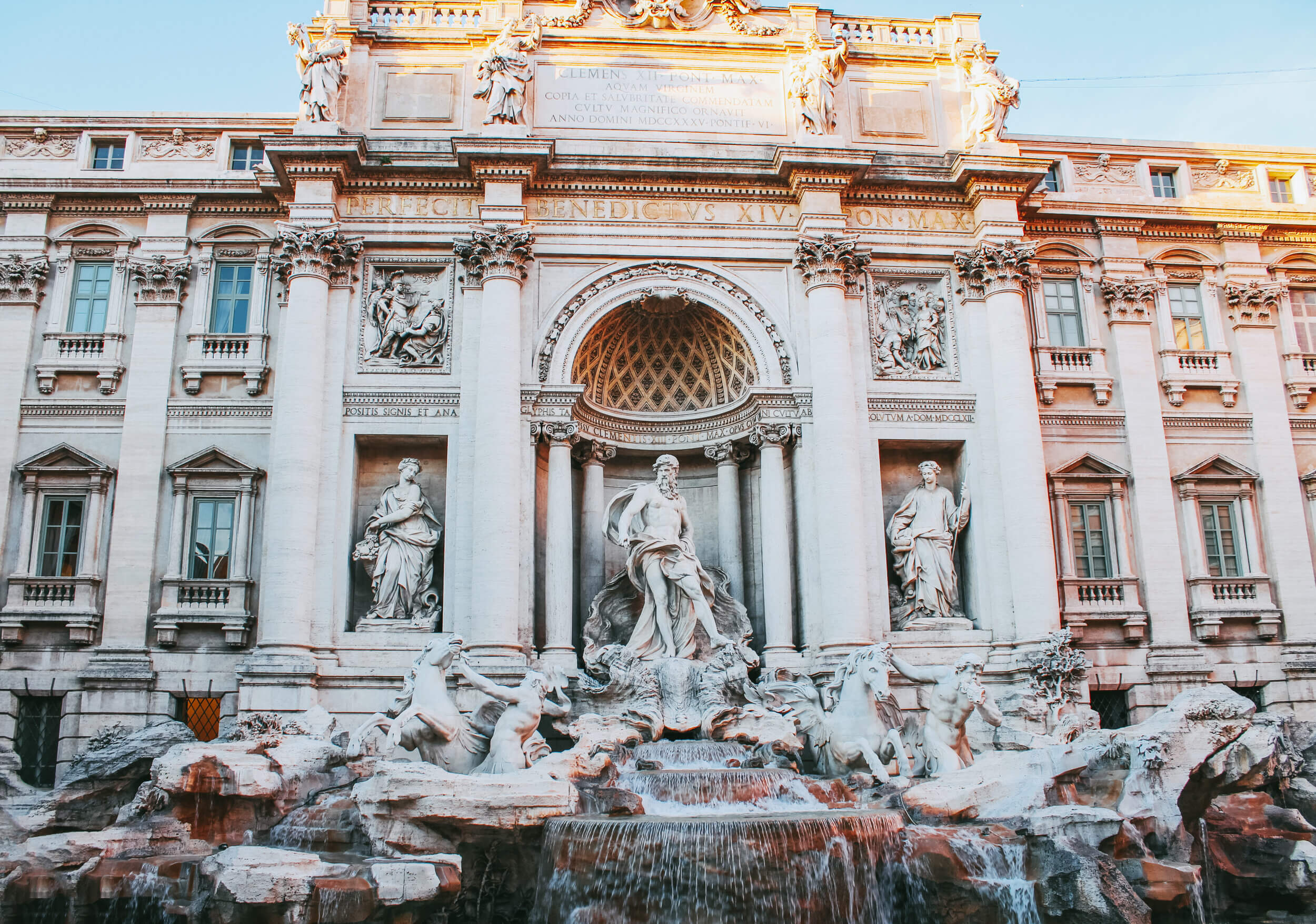
Often called “The Eternal City” for its longevity over the centuries, Rome, Italy’s capital city, is filled with thriving culture, exquisite cuisine, ancient and modern history, as well as some of the most notable works of art and architecture this world has ever seen. As you explore the city, you can practically feel the history of the Roman Empire reverberate off of the streets.
Most of Rome’s notable sights can be seen by walking through the inner city center. Depending on where you are lodging, buses, and trains are easy to navigate to the city center, but once there, sights are a short walk (under a mile) from each other, and it allows exploring the side streets and local living of the city.
The Sights of Rome
THE PANTHEON
Upon entering the Pantheon, there are hardly any words to describe the scene of the overwhelming scale and grandeur of the dome. This is intentional, as this is how you should feel in front of the gods- a sense of humbleness. The dome lacks corners and shows no beginning or end, symbolizing the perfection of how the Roman Empire was to be seen. The perfect sphere of the interior is a symbol of the vault of heaven, while the height of the dome is equal to its diameter, creating balance and harmony in its architecture. There are no windows in the architecture, only a singular “oculus” in the center of the dome. Light streams through the oculus like a river of light, further adding to the spiritual atmosphere of the building.
Located in the heart of Rome, the Pantheon is a must-see on your list in the city. Its characteristic dome is the largest brick dome ever built! As one of the oldest churches in Rome (over 2,000 years old), it is considered a cultural revolution as the first place of worship built for common people to spiritually communicate with God/ the gods. At the time it was built, churches and temples were only meant for priests and vestals and, therefore forbidden to commoners. The Pantheon overturns this concept by being a place for everyone to be freely accepted to practice their faith.
Address: Piazza della Rotonda, 00186 Roma RM, Italy

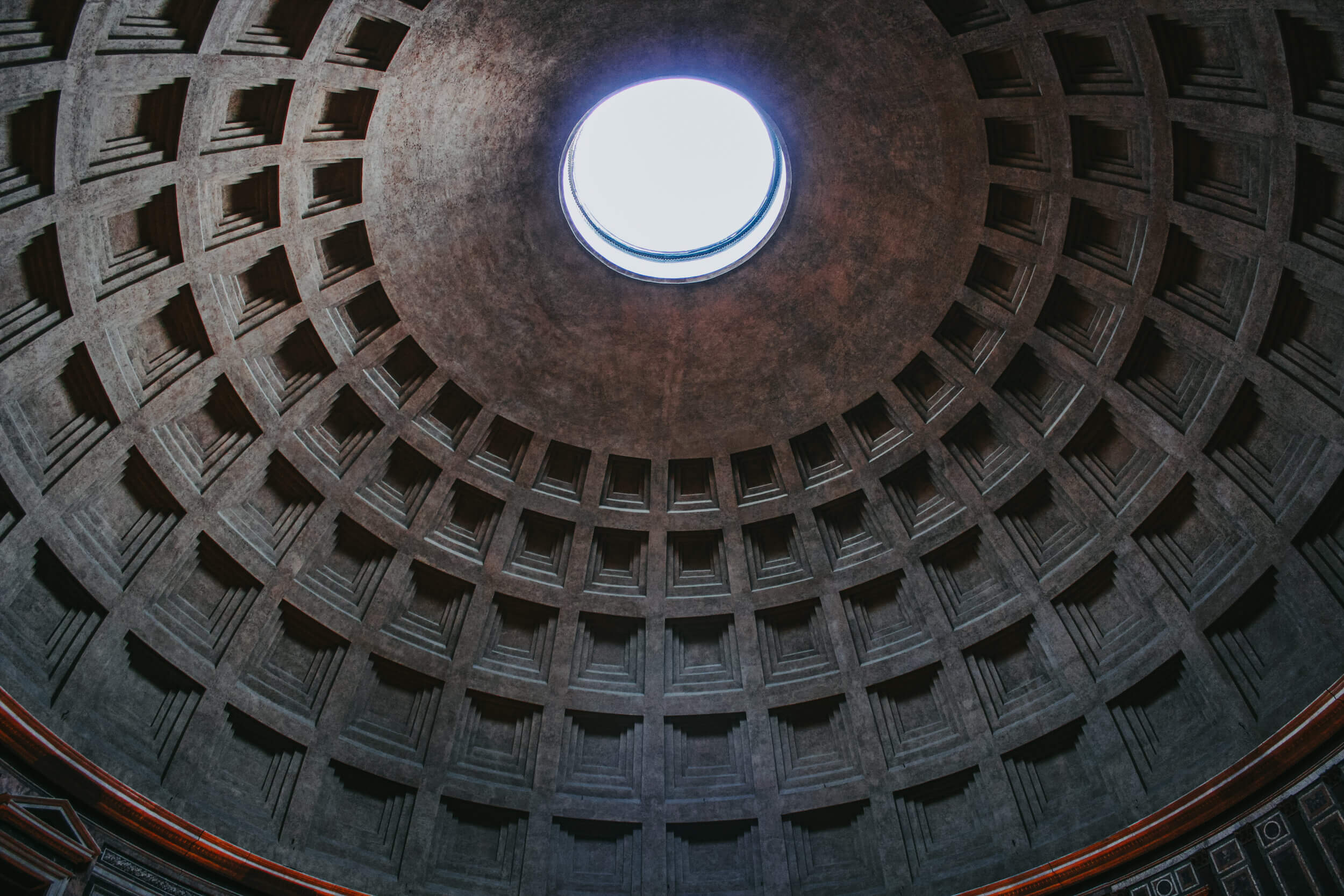

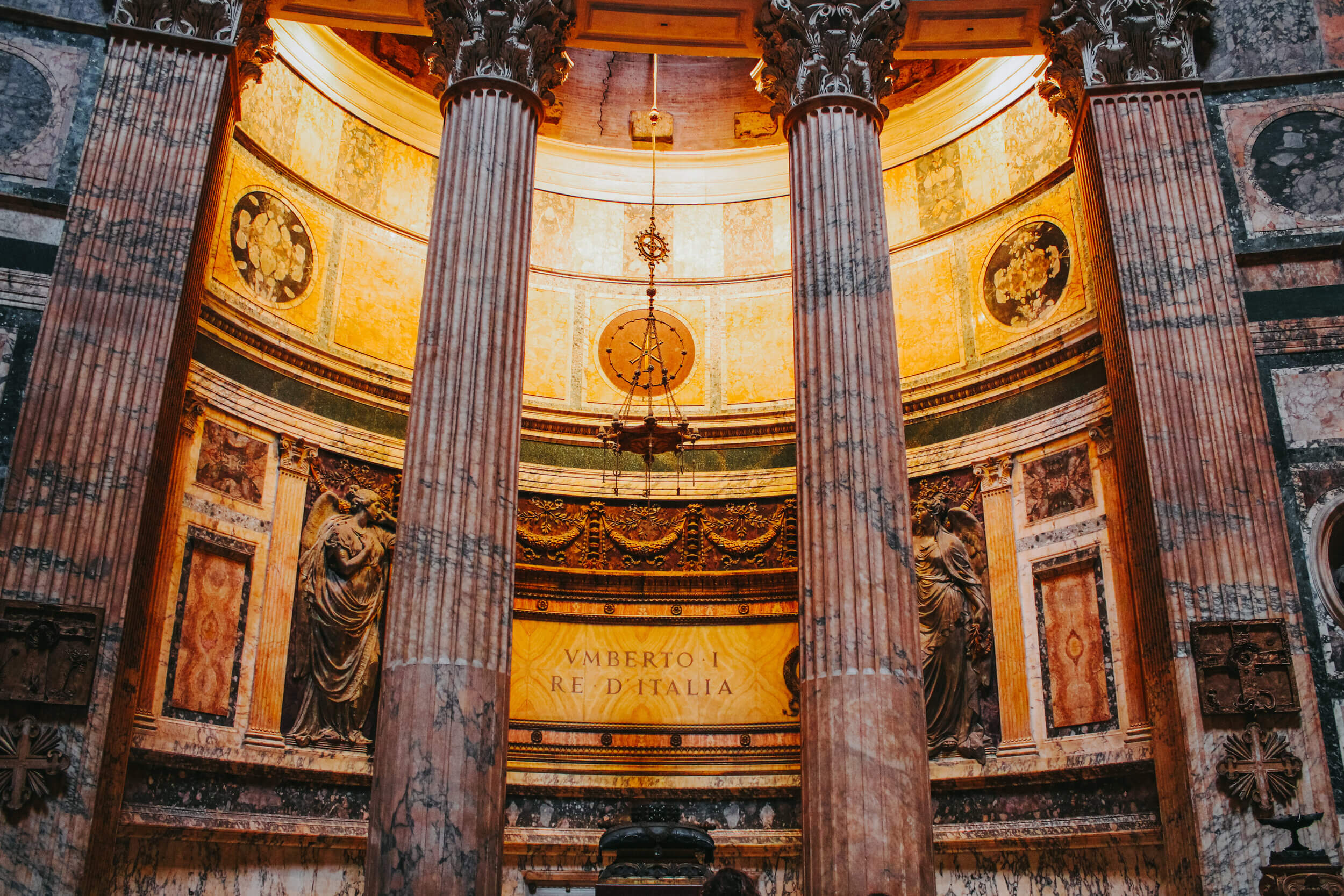

THE TREVI FOUNTAIN (FONTANA DI TREVI)
Walking along the nearby streets of the inner circle of Rome, you can hear the fountain’s presence grow ever louder as you approach closer to the piazza. The Trevi Fountain is a true depiction of the Baroque style of art that embodies the movement of water and the intricate sculptures of mythical gods and creatures. Nestled between the palaces of the historic city center, the fountain is a true work of wonder, carved of stone and so elegantly paired with the incredible power of water. Located a third of a mile from the Pantheon, this sight is much more than a mere sculpture, the fountain is a breathtaking sight and symbol of the great force of nature.
Be sure to have some spare change with you. The legend of the fountain is that if you throw a coin over your shoulder into the fountain, you will return to Rome- an estimated 3,000 coins are thrown into the fountain every day! Coins are collected every morning, and they are donated to those living in need in Rome.
Address: Piazza di Trevi, 00187 Roma RM, Italy




Trajan’s Column, AD 107-113. A triumphal column of marble in Rome to commemorate Emperor Trajan’s victory in the Dacian Wars. It is located in Trajan’s Forum, north of the Roman Forum.
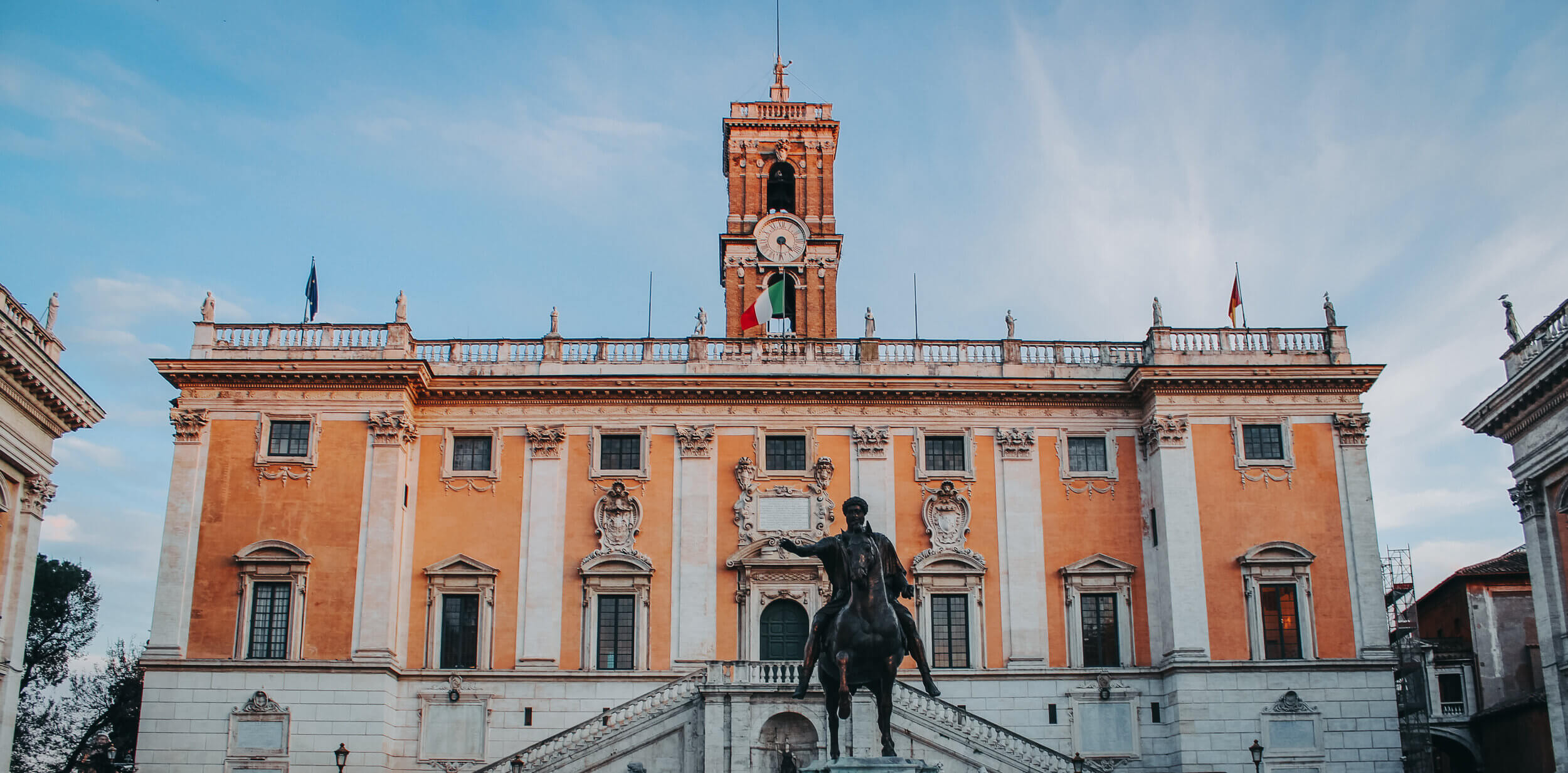

ALTAR OF THE FATHERLAND
Also known as the Victor Emmanuel II National Monument, the Altar of the Fatherland is an architectural gem of the more modern city of Rome. Built in 1885 on the first of the seven hills on which Rome was founded, the altar was built as an emblem of Italy in the world and as a symbol of change in honor of Victor Emmanuel II, who was the first king of a unified Italy. Travelers can view the panoramic scene of Rome from the rooftop terrace (for a fee) and visit the museum located inside.
Address: Piazza Venezia, 00186 Roma RM, Italy
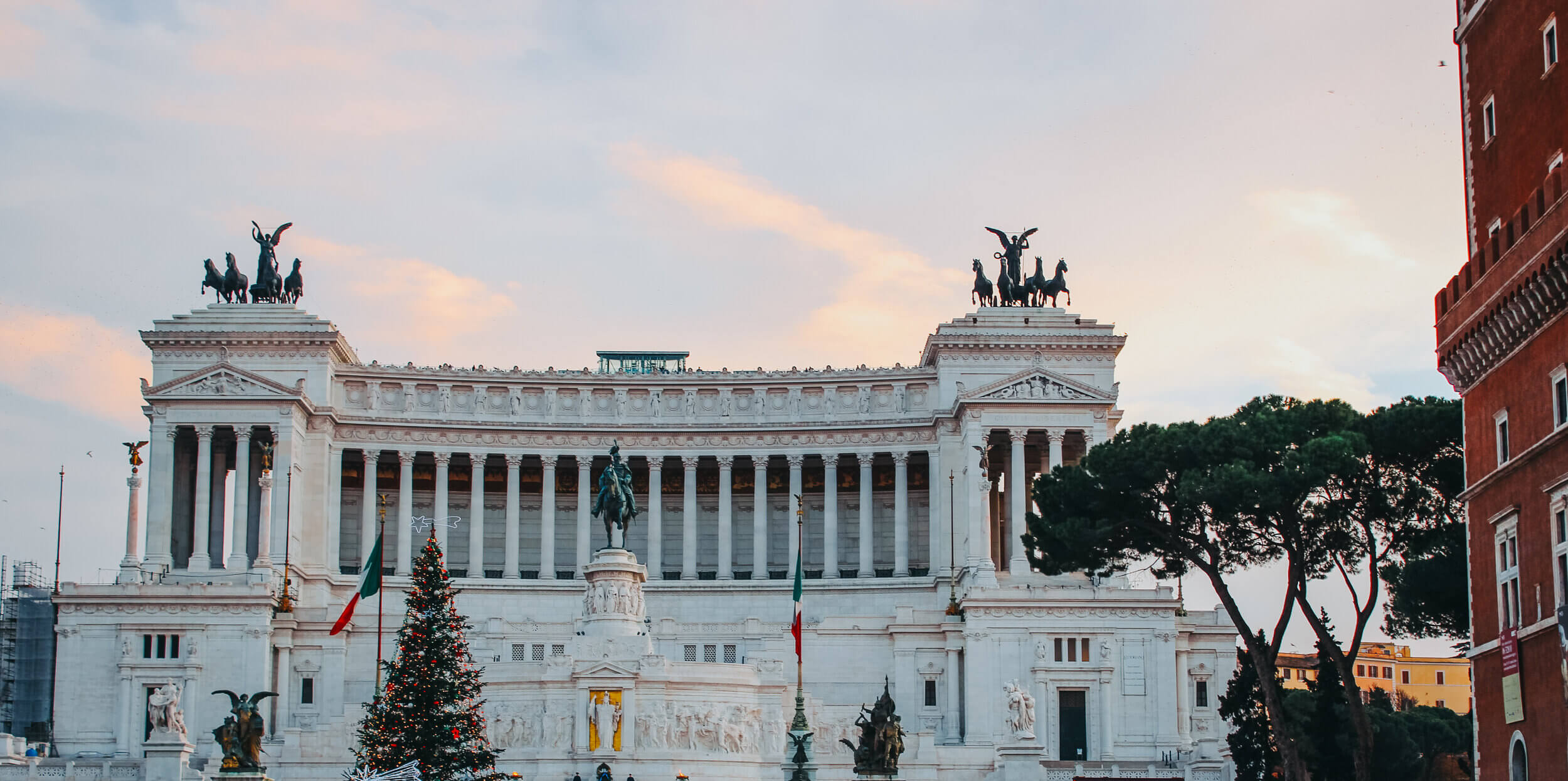
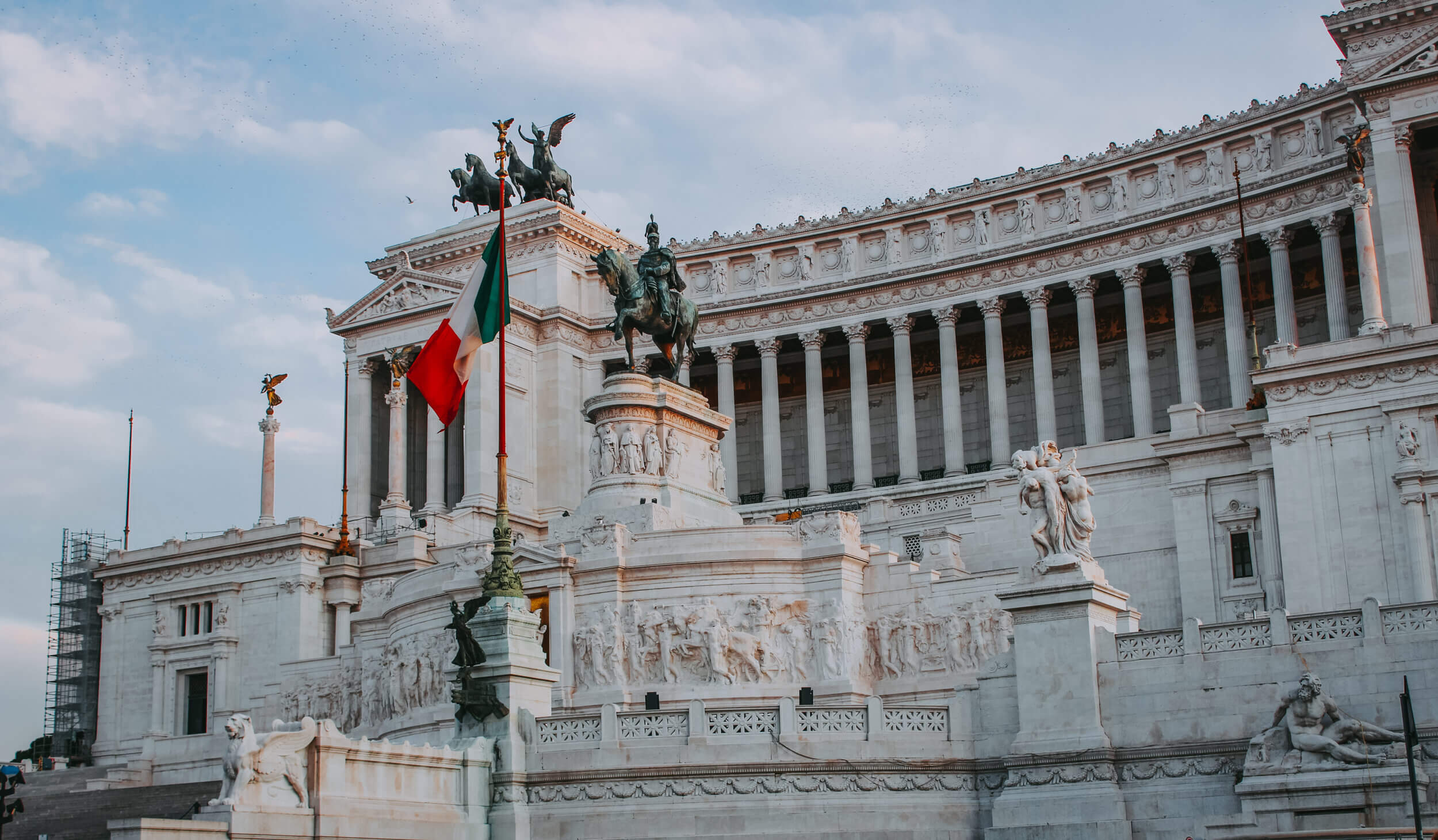
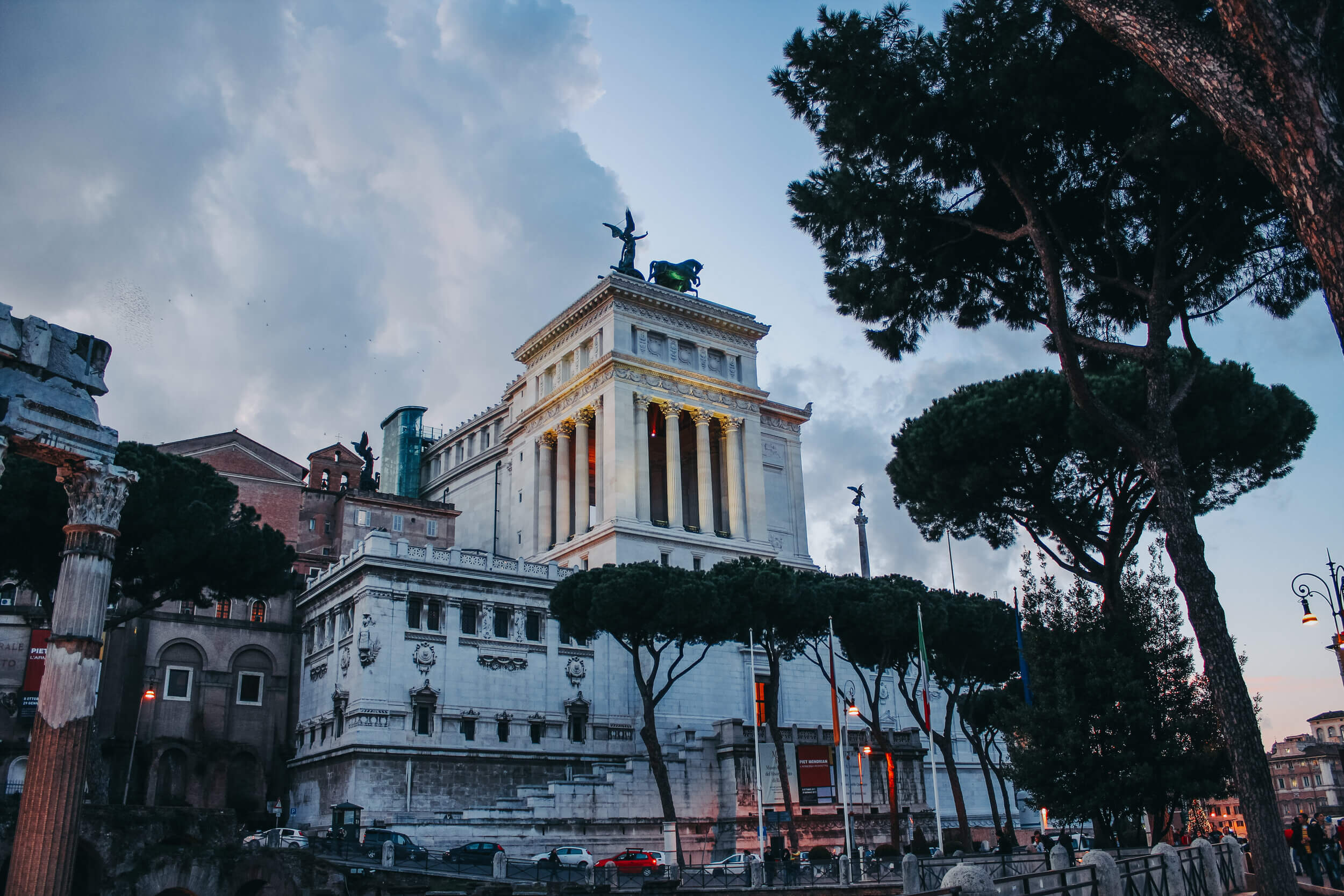
PALATINE HILL
One of the most ancient parts of Rome, Palatine Hill was once one of the most desirable neighborhoods in the city dedicated to the emperors and aristocrats. Palatine Hill is another of the seven hills on which Rome was built. Located across from the Colosseum, this once-thriving area is now composed of remarkable ruins and rolling hills. It is one of the city’s most beautiful attractions, offering beautiful views of Rome and the surrounding area.
ROMAN FORUM
Located adjacent to Palatine Hill, the Roman Forum offers a closer view of the ancient ruins of Rome. Considered the “downtown” area of ancient Rome, you can walk through streets that once held a thriving marketplace, where government meetings were conducted, and more. At night, the area is flooded with spotlights, offering a different view of the ruins.
Address: Via della Salara Vecchia, 5/6, 00186 Roma RM, Italy
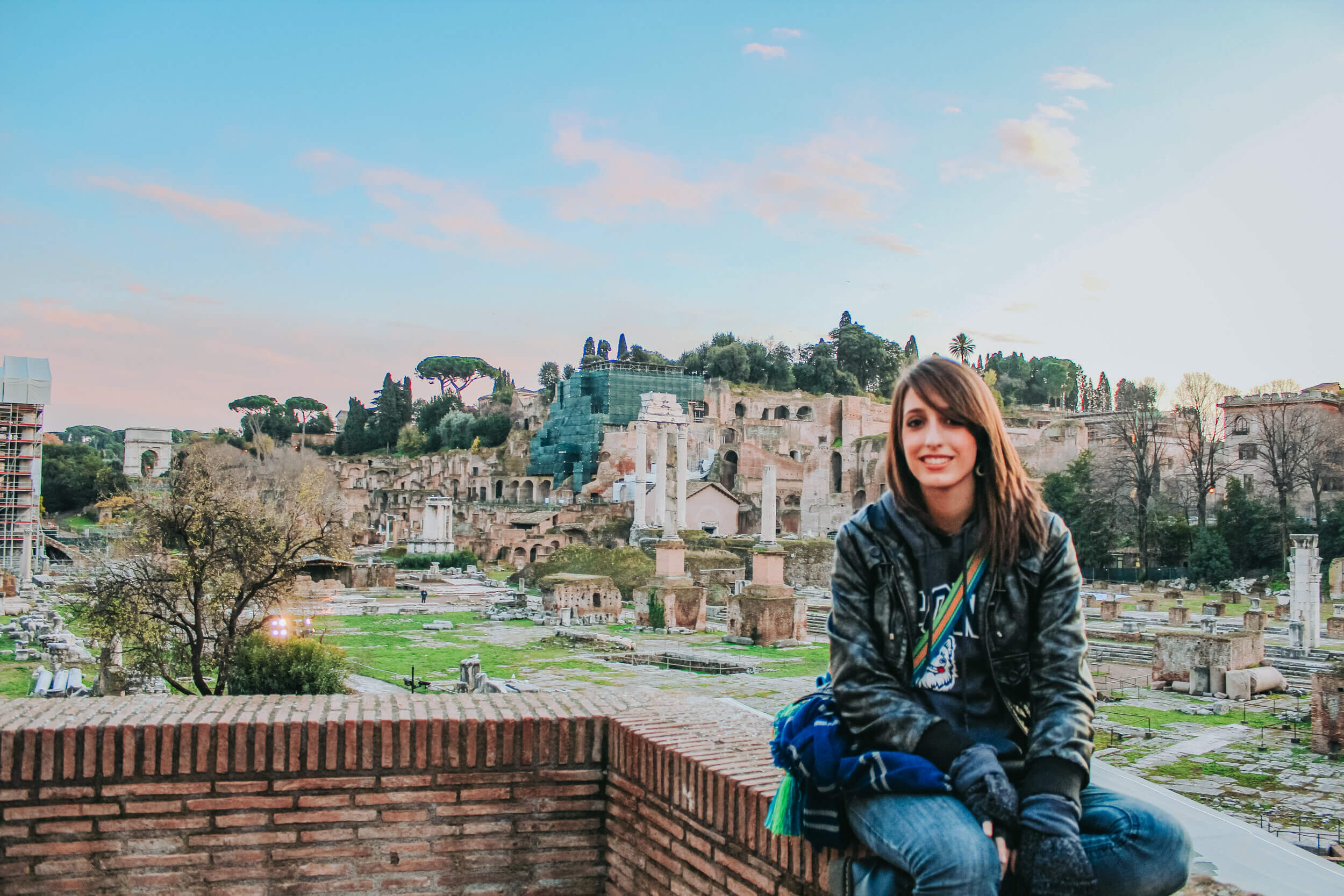
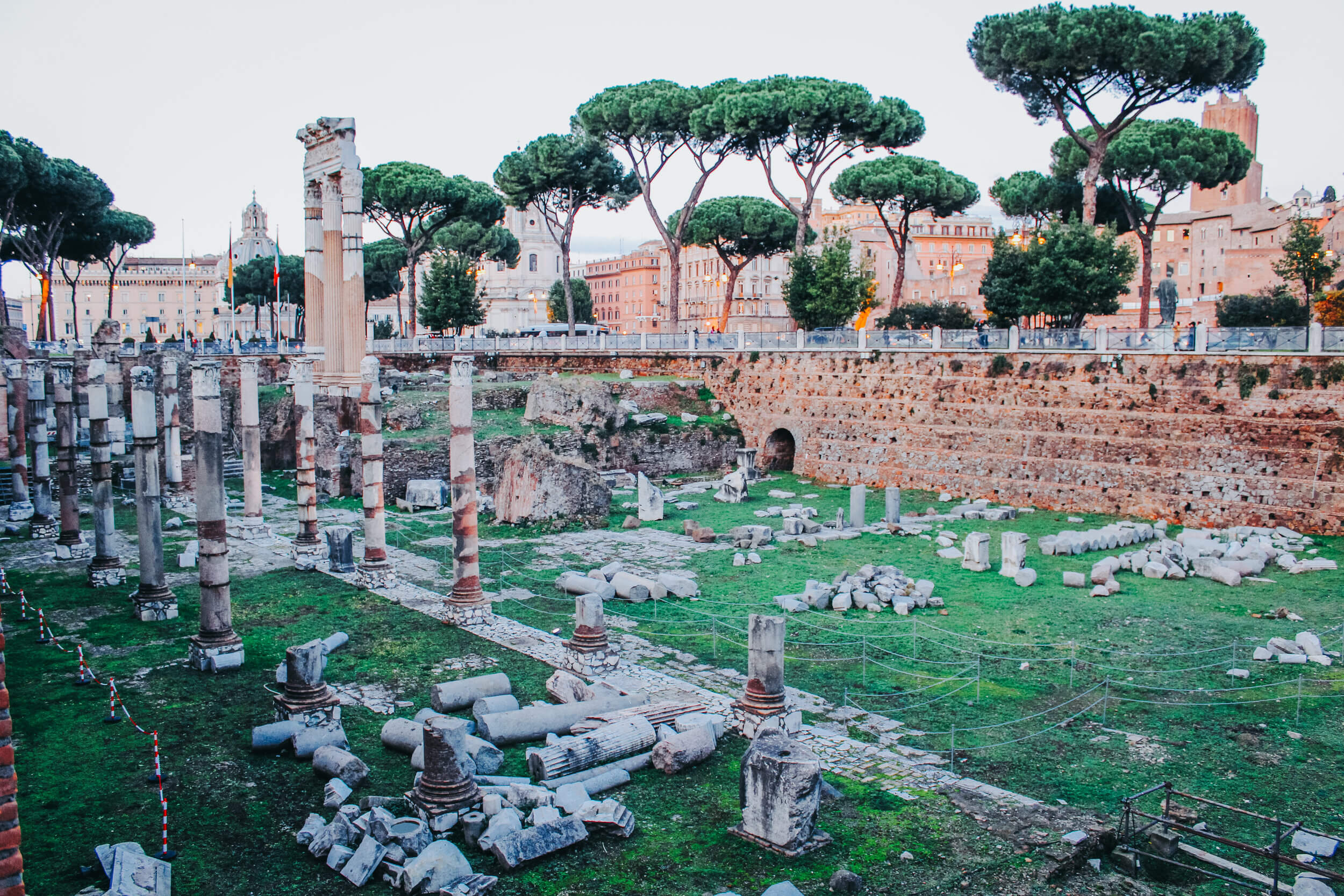
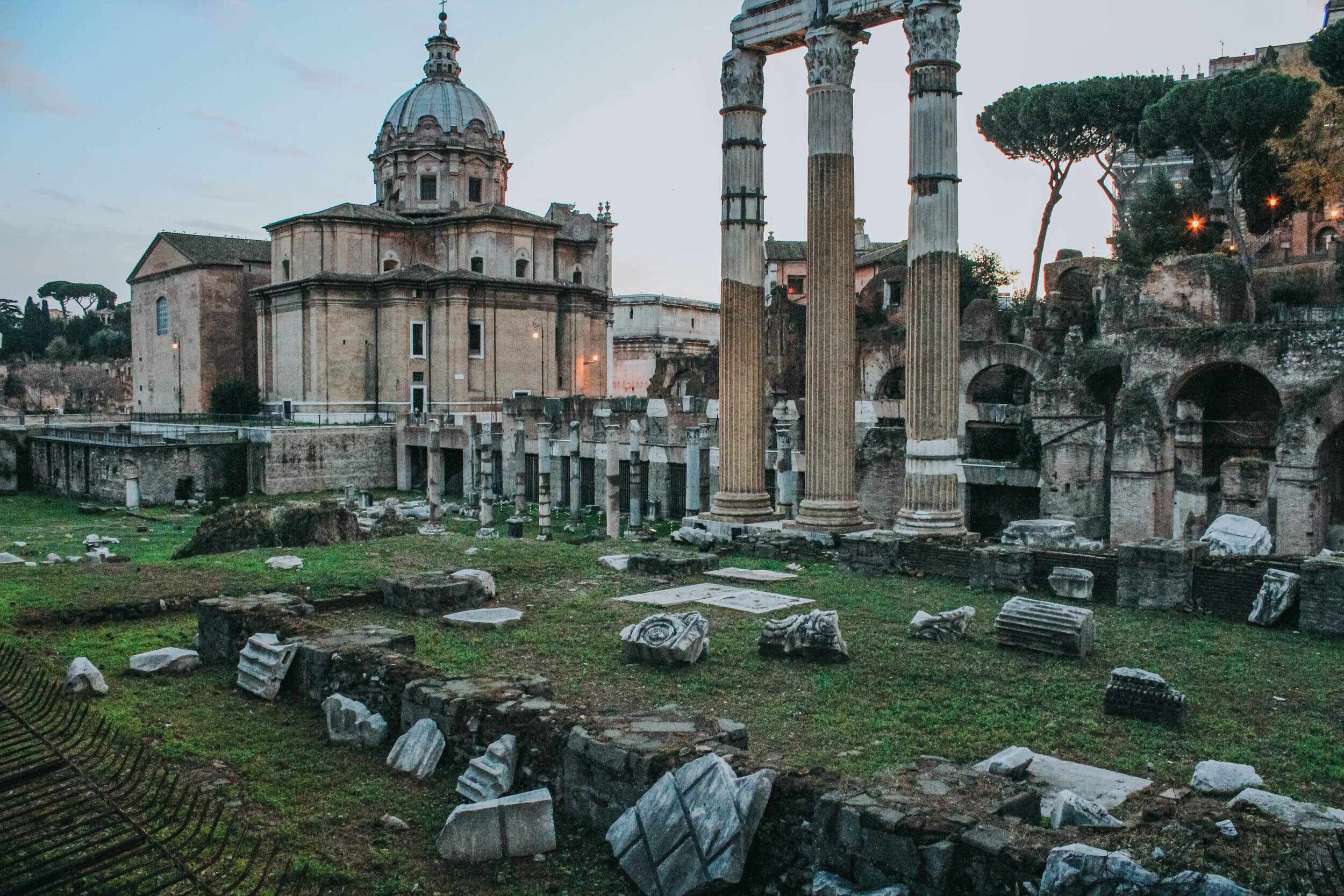
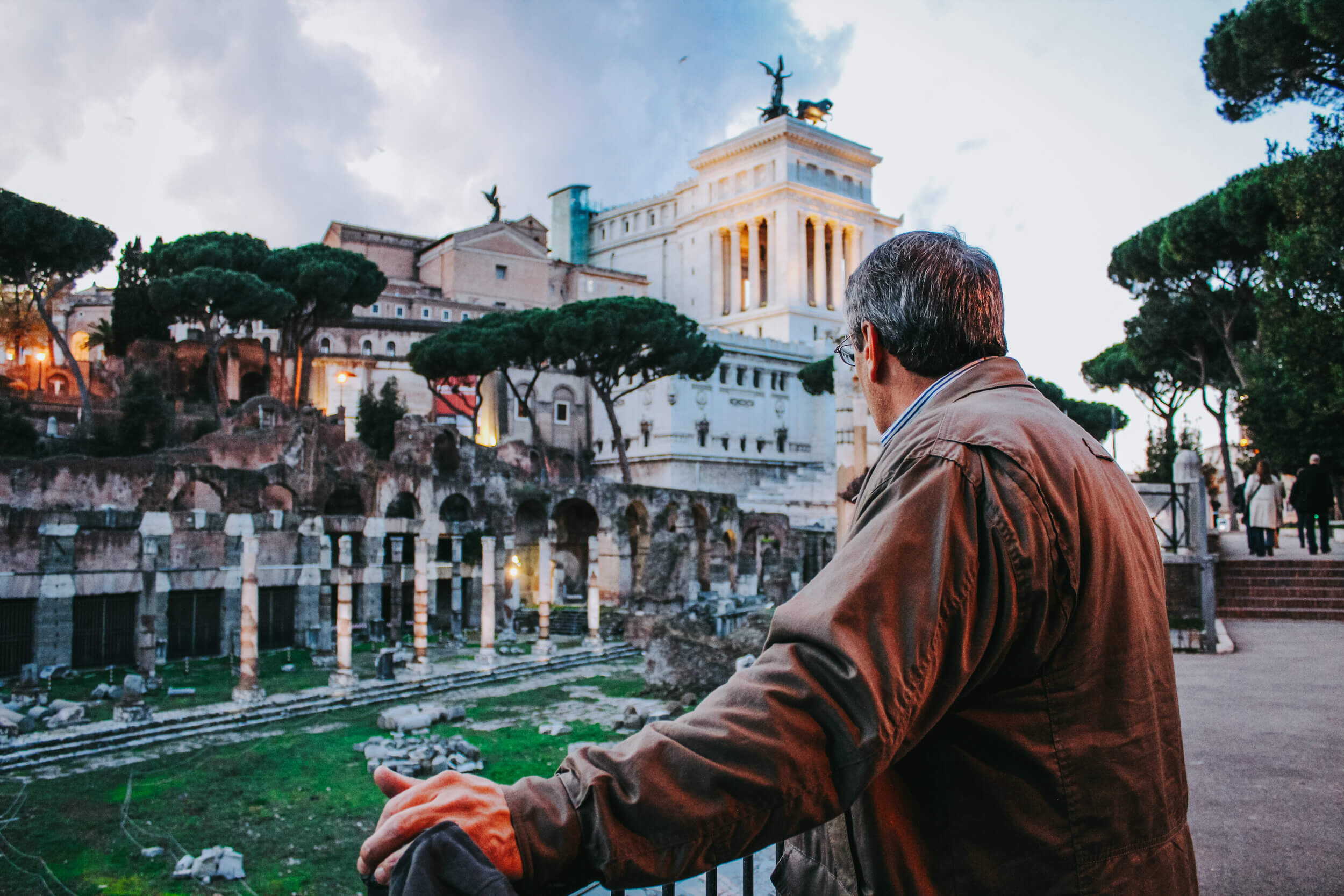
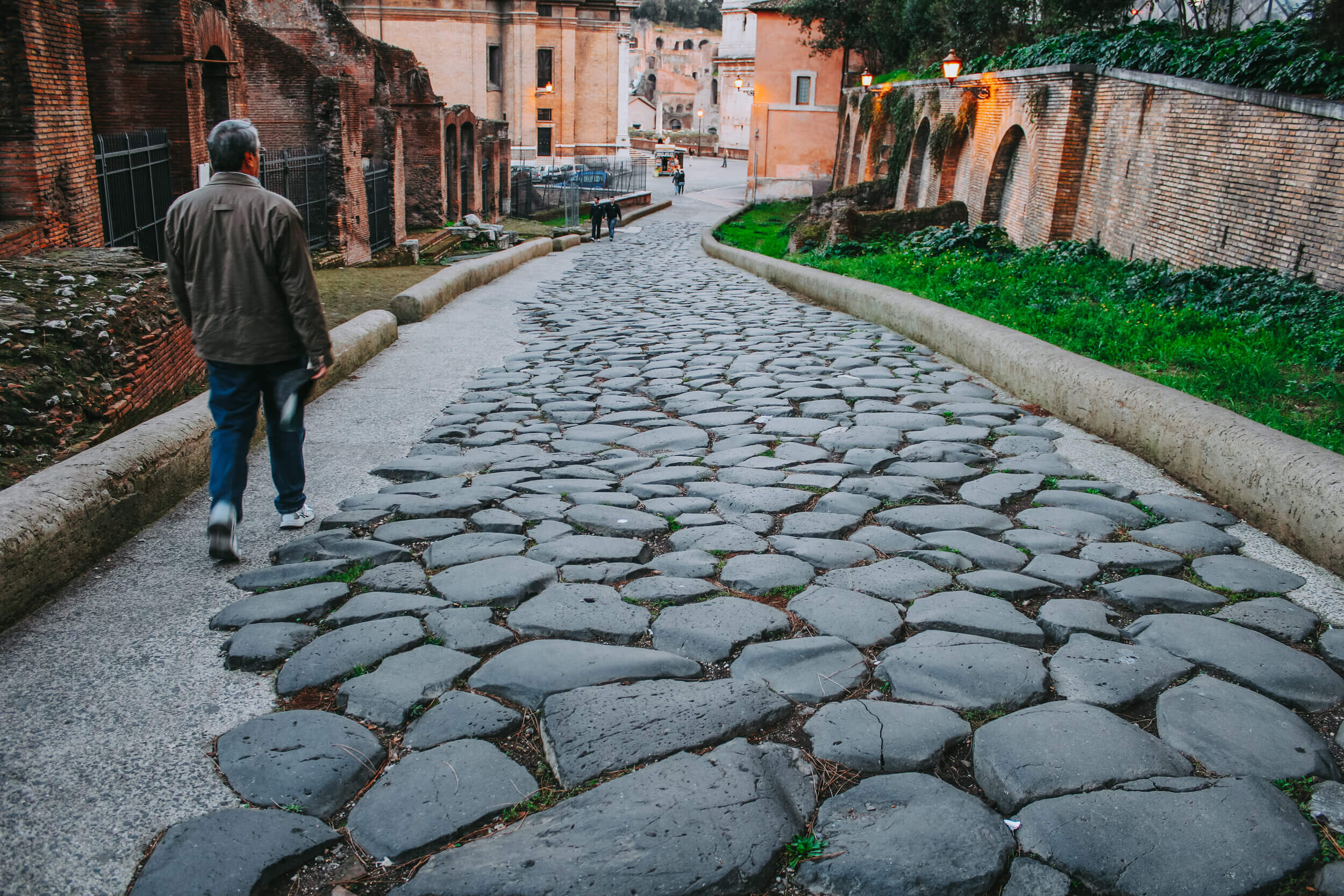

In between the Roman Forum and the Colosseum is the Arch of Constantine, built in 315 AD to commemorate a winning battle and was dedicated to the emperor Constantine the Great. Its impressive structure exemplifies the stylish changes of the 4th century and the collapse of the classical Greek canon during the late Roman period.
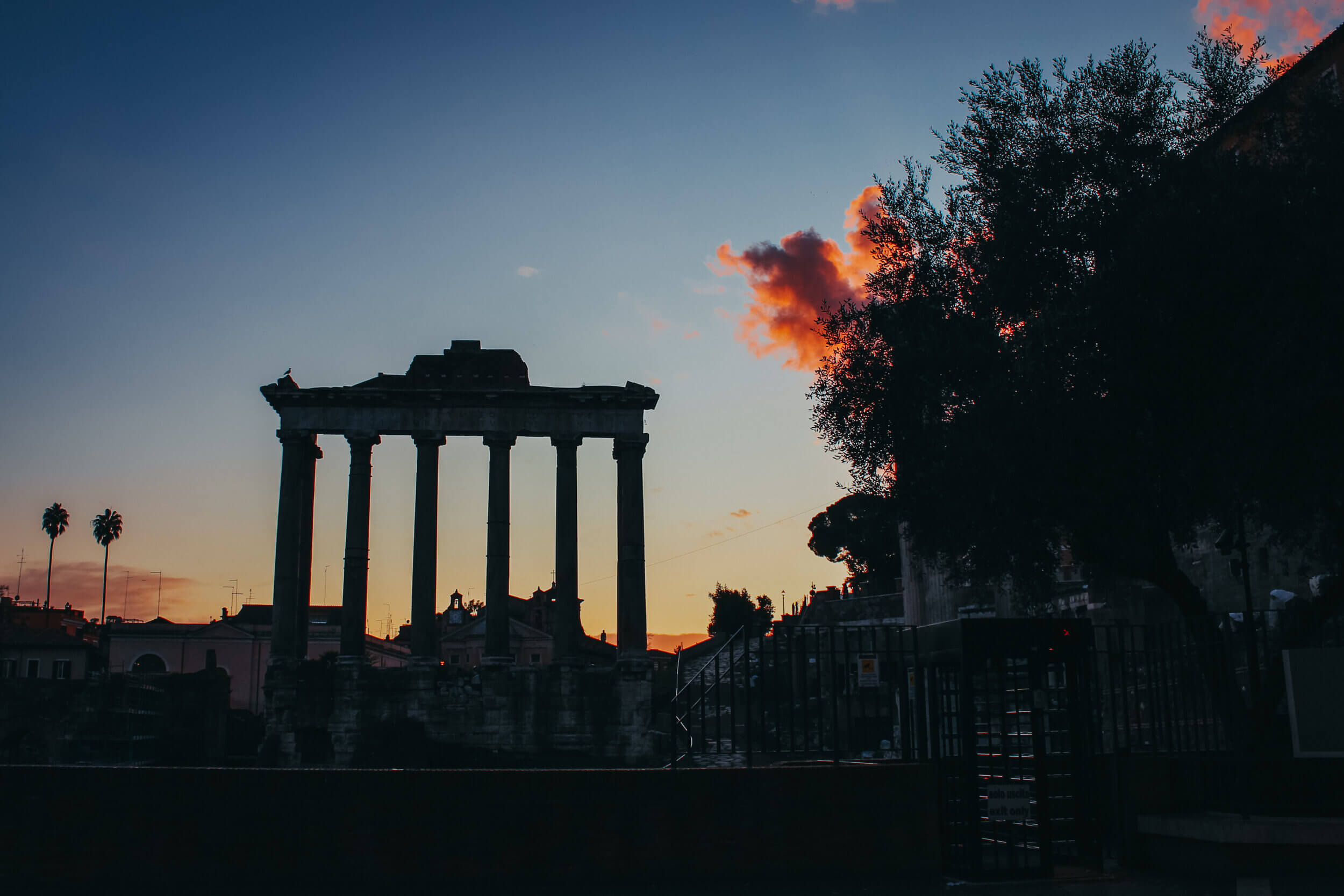
THE COLOSSEUM
Completed in 80AD, the Roman Colosseum (also known as the Flavian Amphitheater) is one of the most popular sites in the inner city center of Rome. Taking less than ten years to build, in its prime, it was white and completely covered in travertine stone slabs. It was the largest amphitheater of its time, holding up to 80,000 people at a time; its elliptic shape allowed for more spectators, and the tiers of seats were inclined in a way so that people would get the perfect view wherever they sat. Entry to the Colosseum was free for all Roman citizens, but the seating levels were divided according to social status. The upper levels were for commoners, and the closer levels to the arena were for higher social statuses- the first row was for senators, priests, and the emperor.
Even though the Colosseum of the present day is a skeleton of the greatest arena of the ancient world, we are still able to marvel at the architectural techniques and magnificent sculptures carved into its facade. The Romans incorporated a technique that is popular around ancient Rome, the arch. This feature allowed for weight to be distributed perfectly to create an elliptical arena. Tours are offered daily of the arena floor and the underground chambers of the Colosseum. Be sure to add this to your list of sites to see!
Address: Piazza del Colosseo, 1, 00184 Roma RM, Italy


THE SPANISH STEPS / PIAZZA DI SPAGNA
Less than a mile from the Trevi fountain is one of the most famous staircases in the world- the Spanish Steps, an urban monument of Roman Baroque style. The steps are named for the Piazza di Spagna (the Spanish Square) and the Spanish Embassy located nearby. At the bottom of the stairs is the famous Barcaccia Fountain by Pietro Bernini and his son Gian Lorenzo (take note of this name- you will see it again throughout other notable artworks in Rome and Vatican City). In the Renaissance, the square was a watering hole for artists and writers alike and was considered the most popular tourist attraction in the city. Across the street from the Barcaccia Fountain is Via dei Condotti, a street that is bustling with traffic and highly fashionable shops, such as Gucci, Prada, Dior, and more!
Address: Piazza di Spagna, 00187 Roma RM, Italy
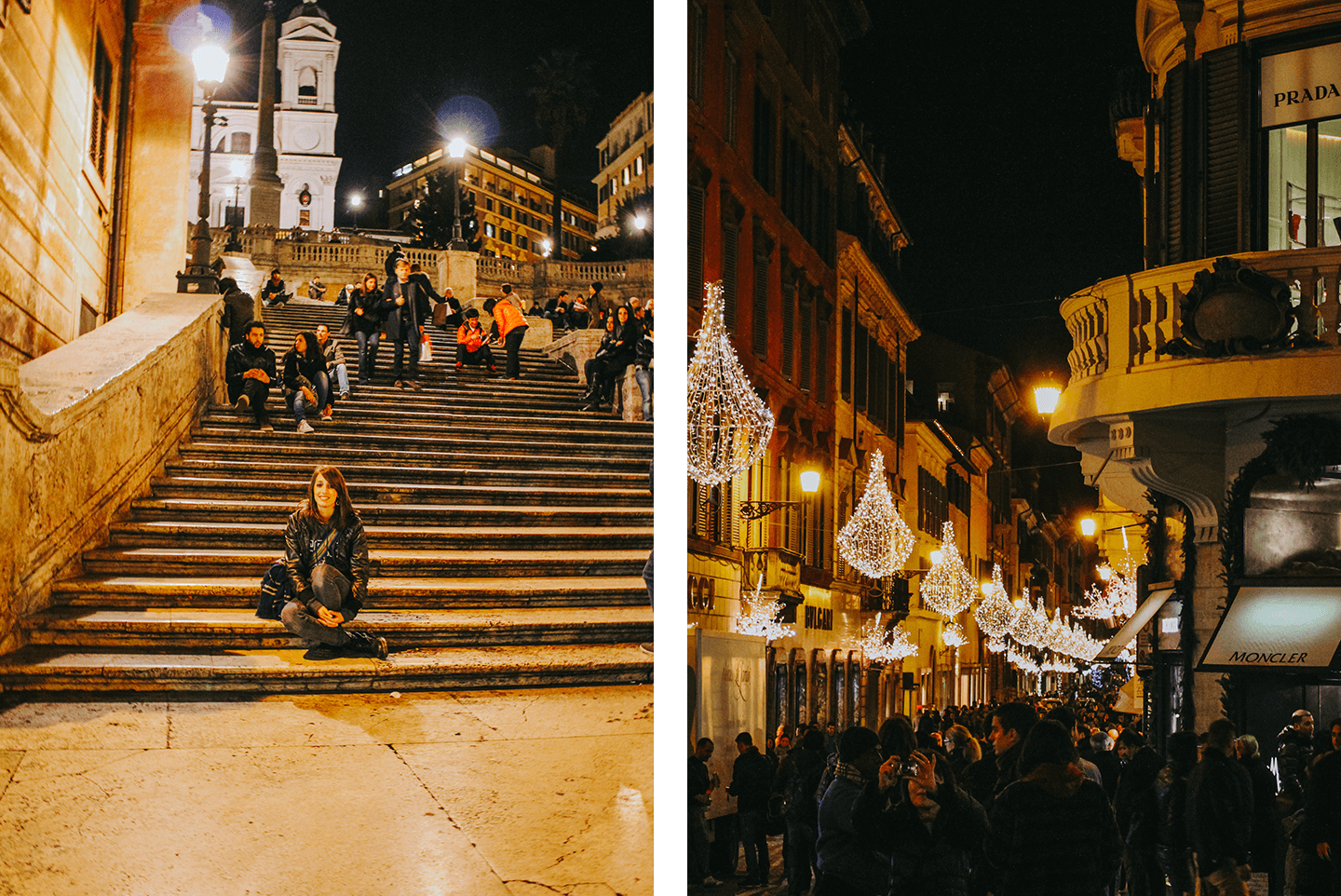
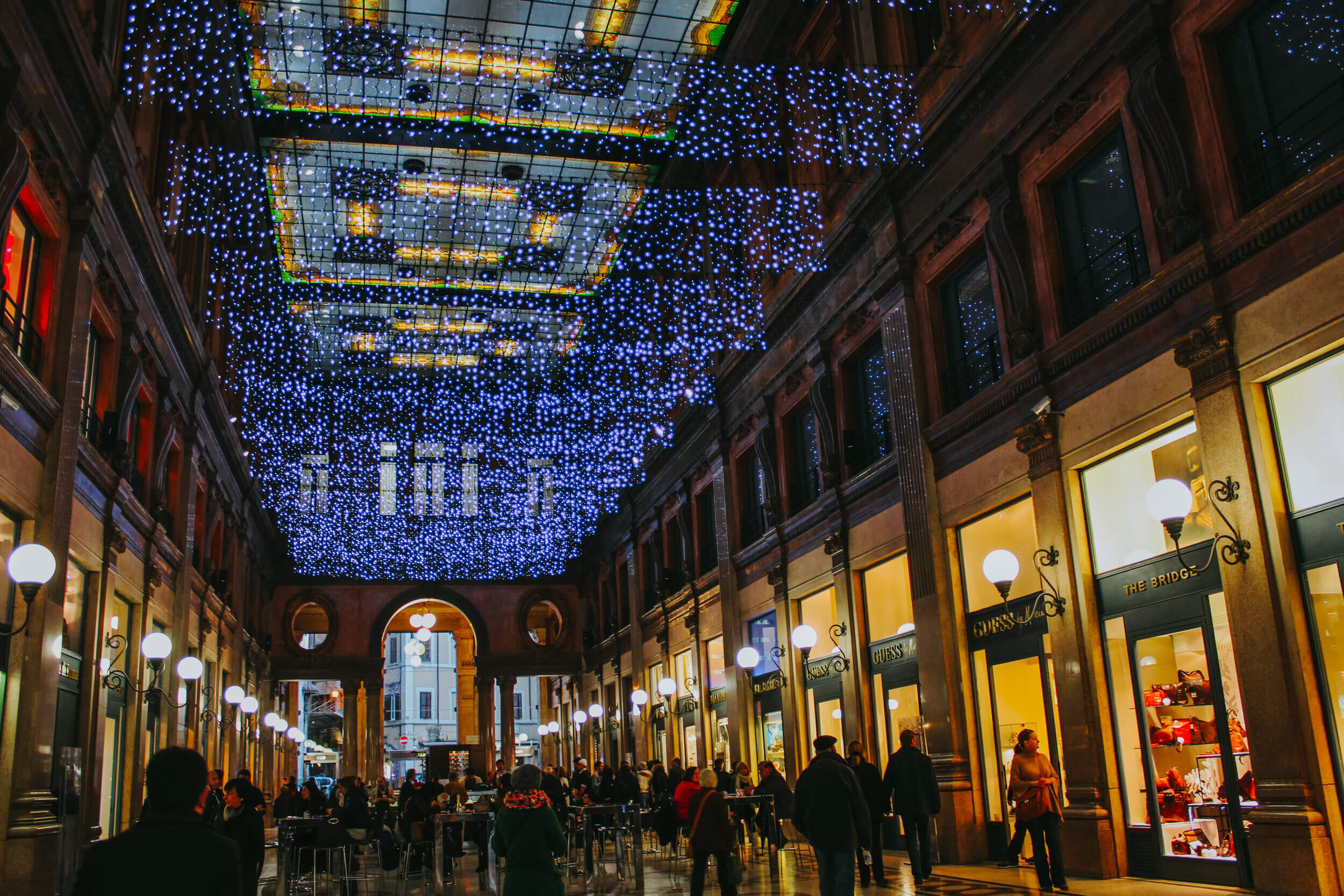
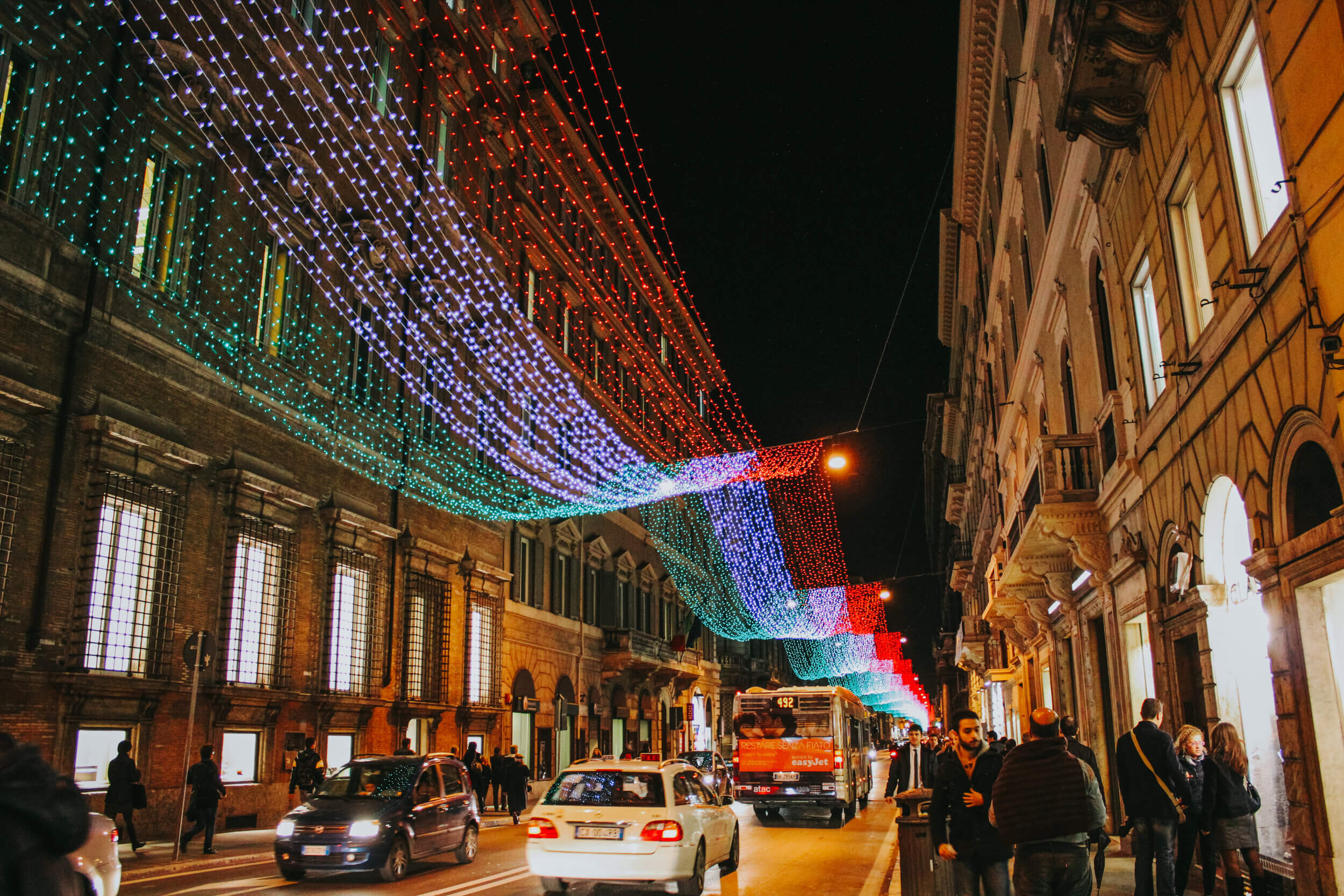
VATICAN CITY
Located within the city limits of Rome is the independent city-state of Vatican City. Home to the center of the Catholic Church and the Pope, the small country is only roughly 121 acres and is the smallest country in the world. Notable sites within Vatican City are Saint Peter’s Basilica, the Vatican Museum, and countless artworks such as Michelangelo’s Sistine Chapel and Raphael’s School of Athens.
Address: Viale Vaticano, 00165 Roma RM, Italy
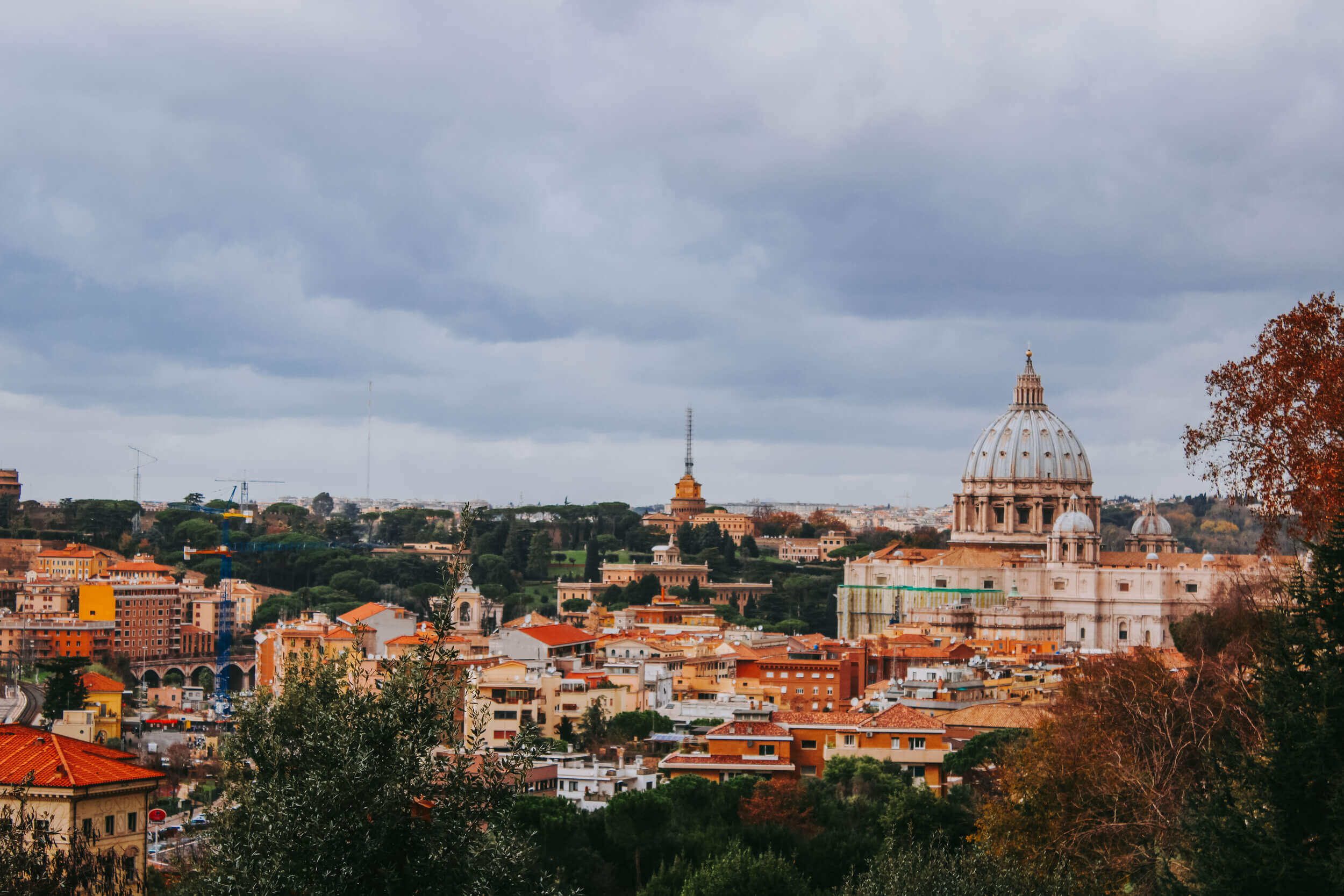
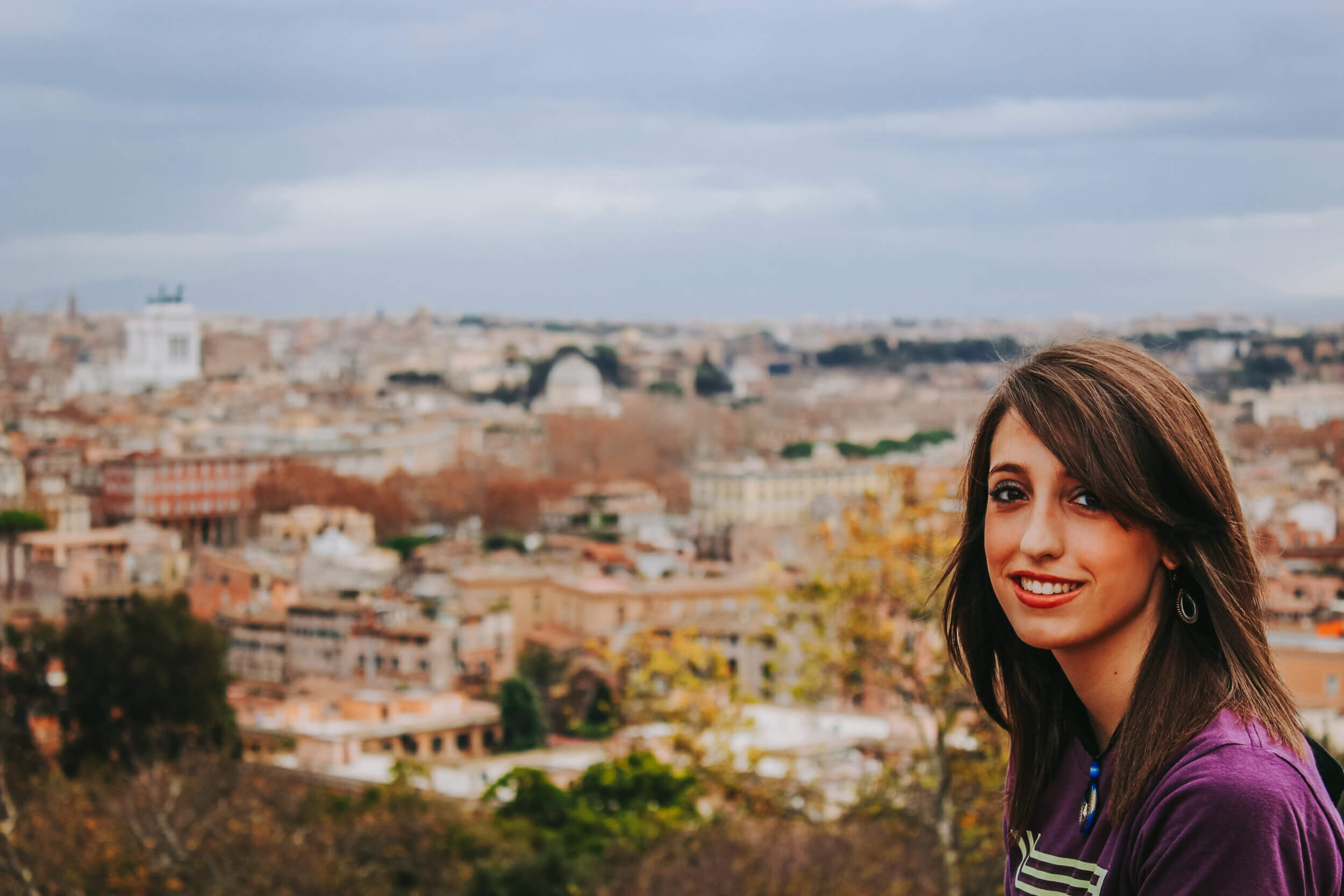
THE VATICAN MUSEUM AND THE SISTINE CHAPEL
Upon entering the Vatican Museum, you are transported into a world filled with some of the most famous and miraculous works of art this world has ever known. As the 5th largest museum in the world, these works of art are priceless and are collected, or commissioned, by the popes of the Vatican. There are more than 70,000 pieces exhibited over 42,000 square meters, with 50,000 pieces preserved in vaults. There is too much to see in just one day visiting the museum. I suggest researching which galleries to view before your visit so that you can see as much as possible!
For the full list of Galleries (including the Sistine Chapel) within the museum, visit the official website: The Vatican Museum
Although every room is filled with history and beautiful artwork from every era, it is not a visit to the Vatican Museum without a stop at The Sistine Chapel by Michelangelo, the most sought-after room in the museum. In October of 1512, the commission was officially completed after four years of meticulous and hand-painted work, all done solely by Michelangelo. As one of the greatest works of art of all time, The Sistine Chapel is one of the most celebrated masterpieces in the world. Millions of tourists every year from around the world come to the Museum to view and admire it.

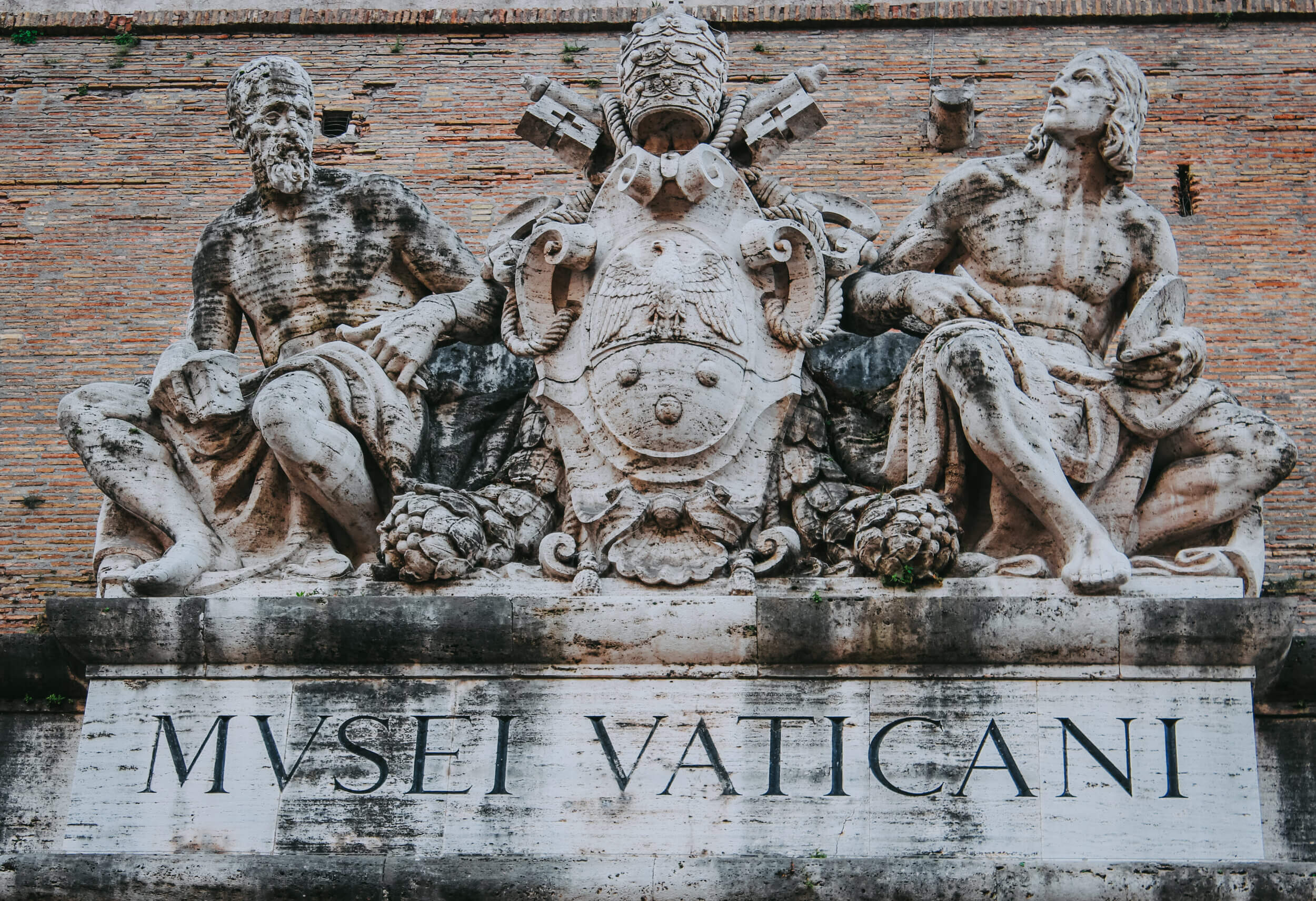

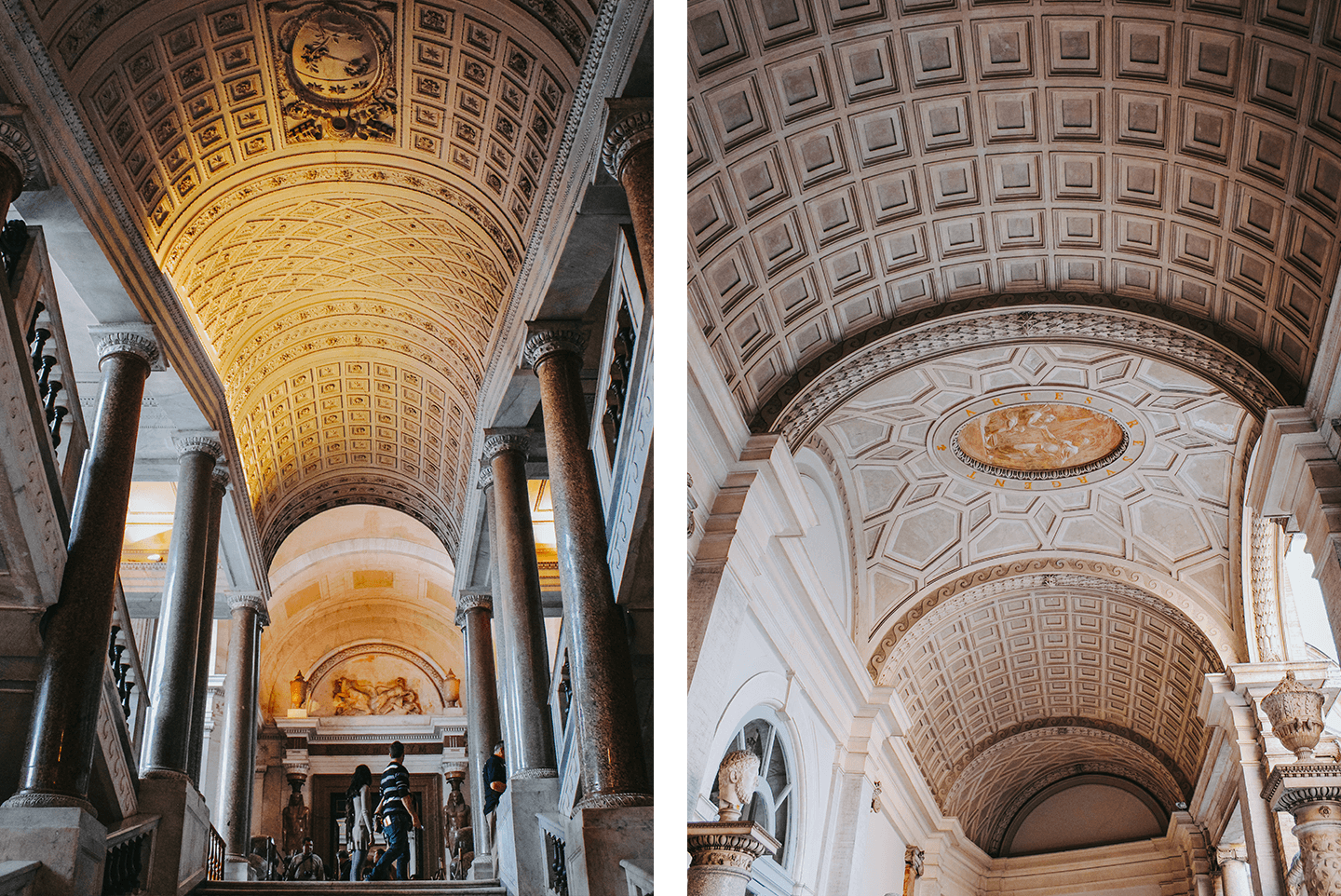


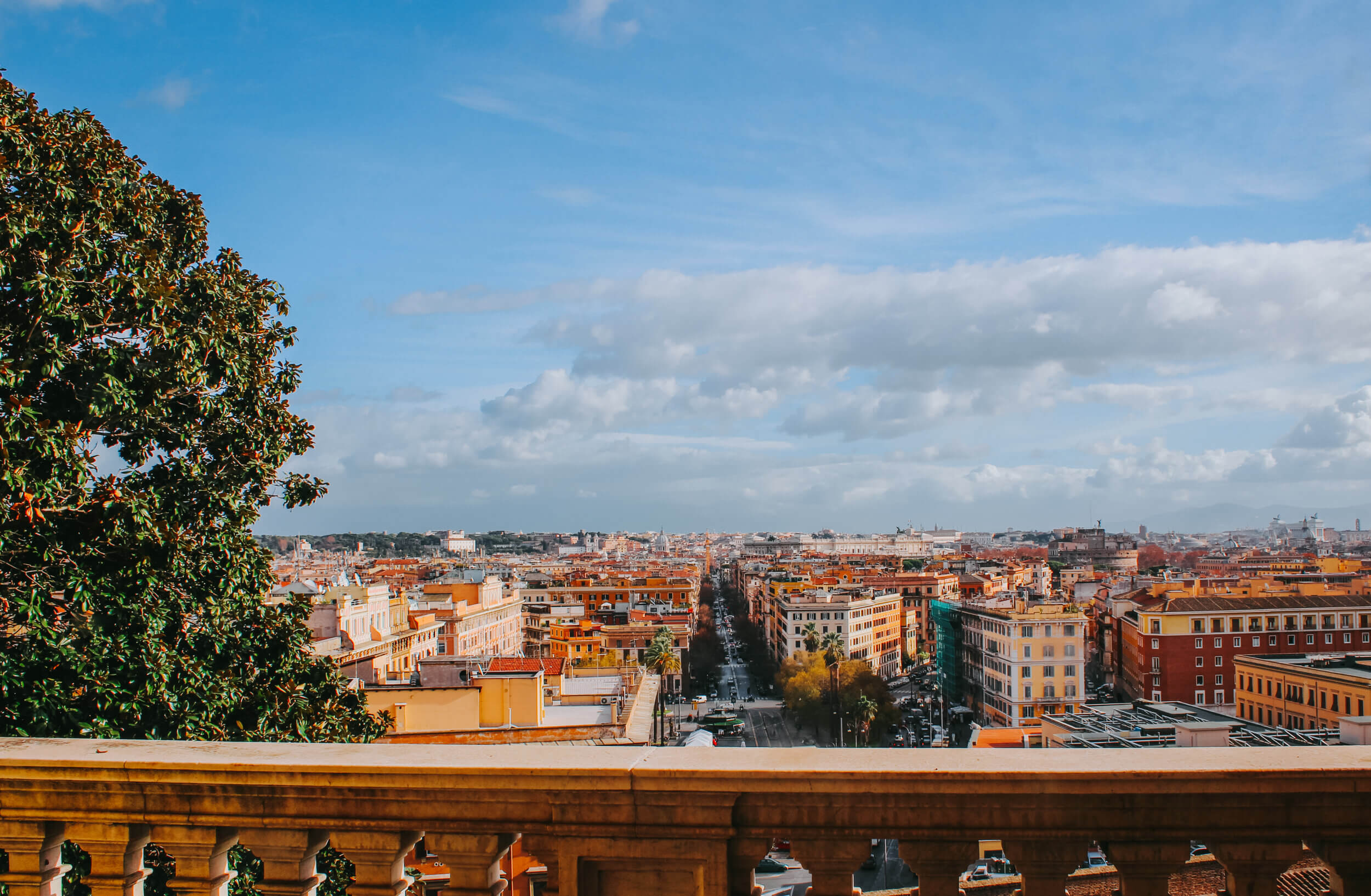
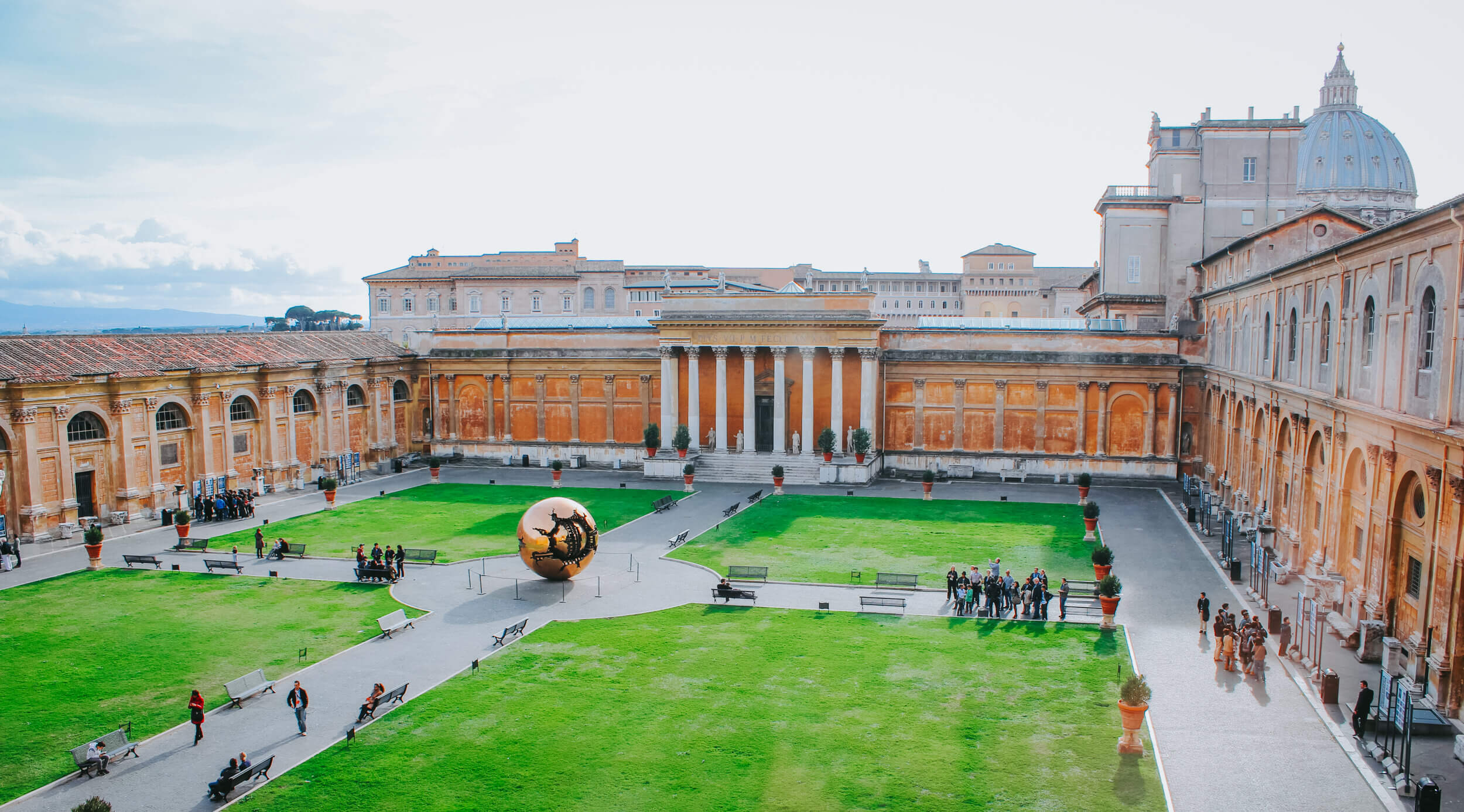
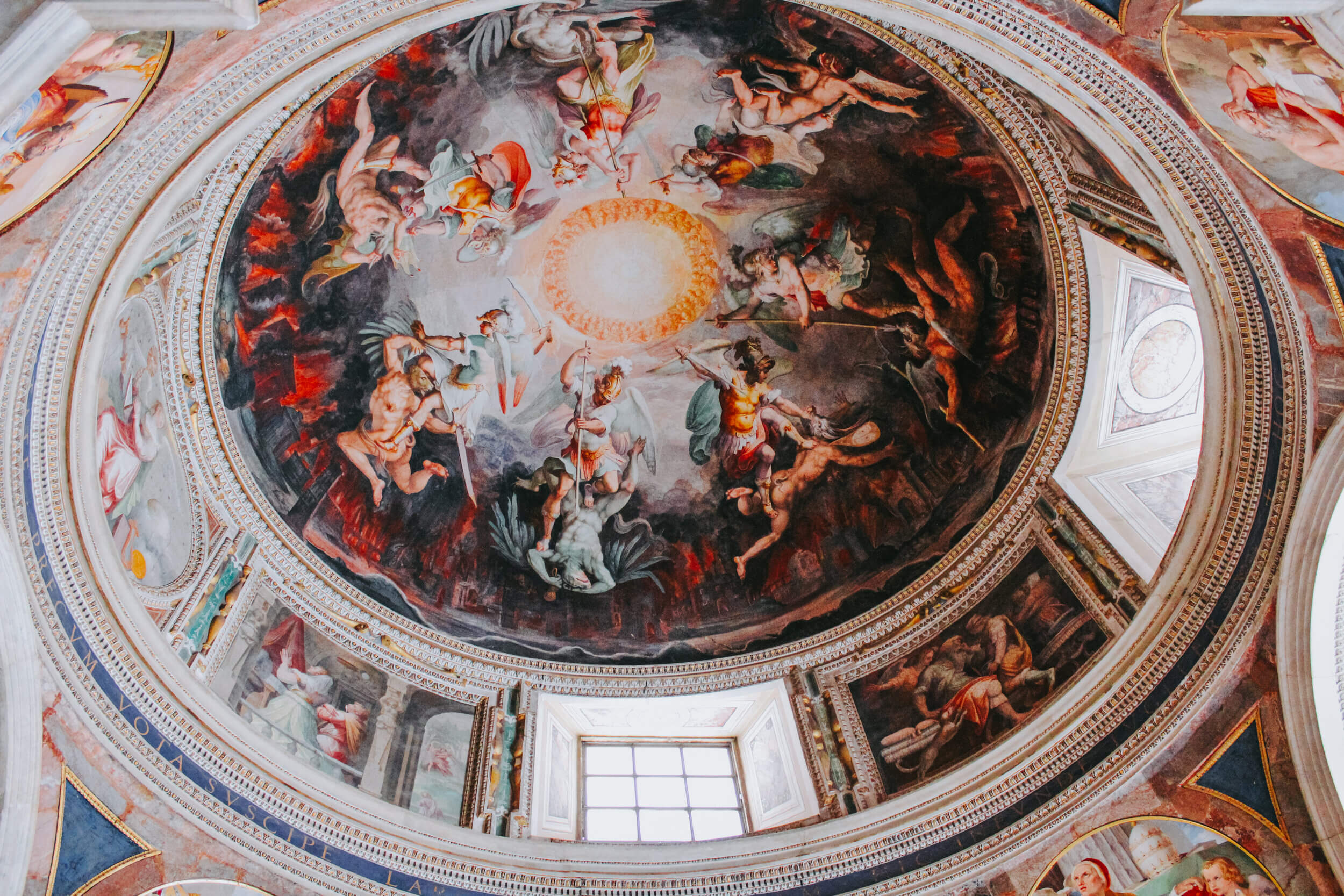

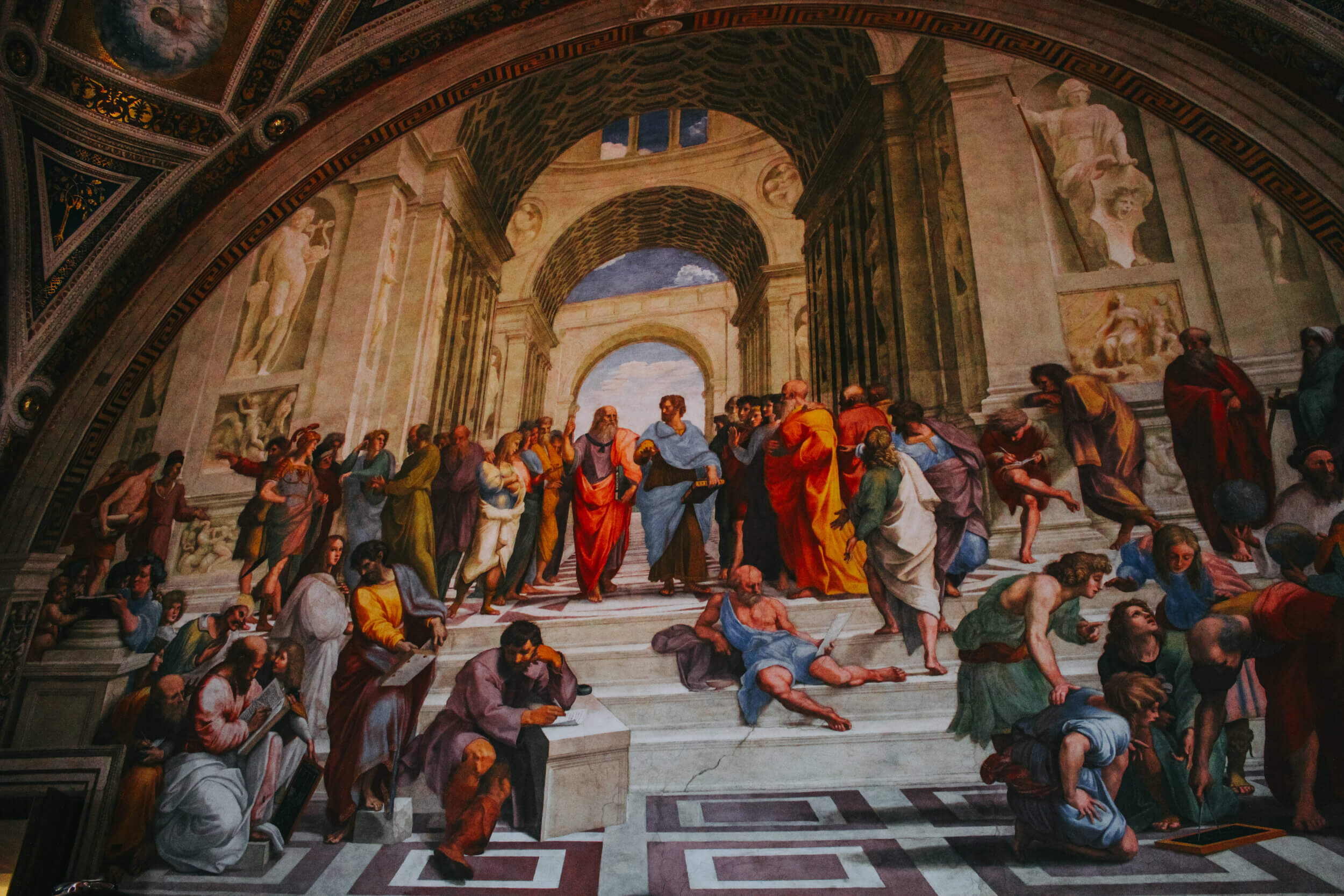
The School of Athens, by Italian Renaissance artist Raphael. Painted between 1509 and 1511, the commissioned piece is located in the Apostolic Palace in the Vatican Museum.
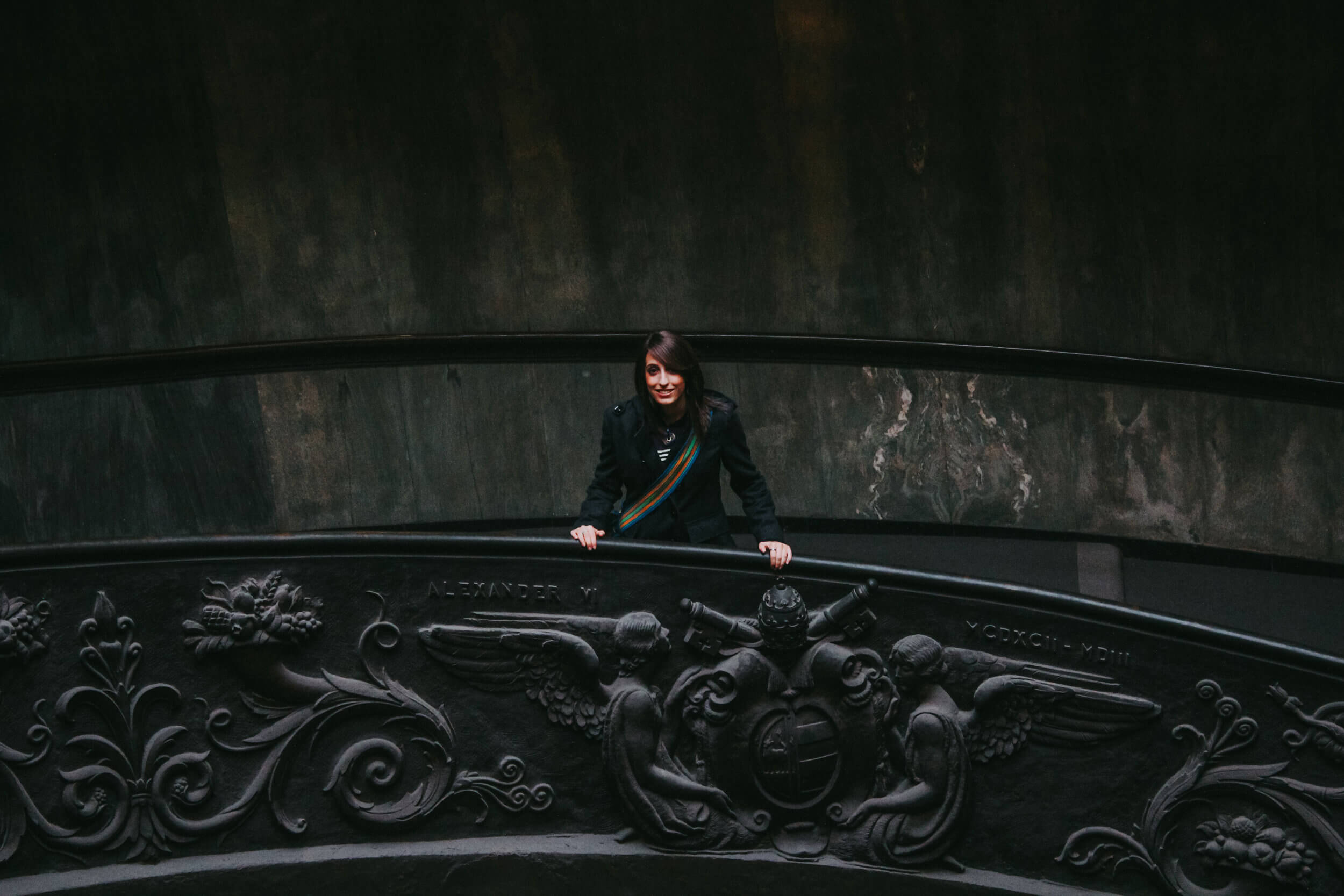
ST. PETER’S BASILICA
At the center of the Christian world and Church is the Basilica of Saint Peter, located within Vatican City. Those who visit the Basilica travel from all over the world, from all classes of people, to be united in a single place as those of religious faith and admirers of art and architecture. The church was built in the place where the apostle Peter was killed and later buried. His name was given to him by Jesus meaning “pietra,” the rock on which the Church would be built, as he was the first Pope and head of the Church. Before his commission of the Sistine Chapel, Michelangelo was entrusted to personally finish the Basilica and design Peter’s monumental tomb. The “cupolone,” as the Romans refer to the tomb, is the large dome that adorns the exterior of St. Peter’s Basilica.
By the 15th century, the Basilica was starting to have signs of collapse and Gian Lorenzo Bernini was commissioned to restructure the facade in 1625. Bernini planned to design a piazza in the shape of an ellipse. The piazza would be bordered by a quadruple colonnade forming an area wide enough for a carriage to pass through. Along with Bernini, all of the great architects of the time had a hand in its characteristic Roman Renaissance and Baroque design.

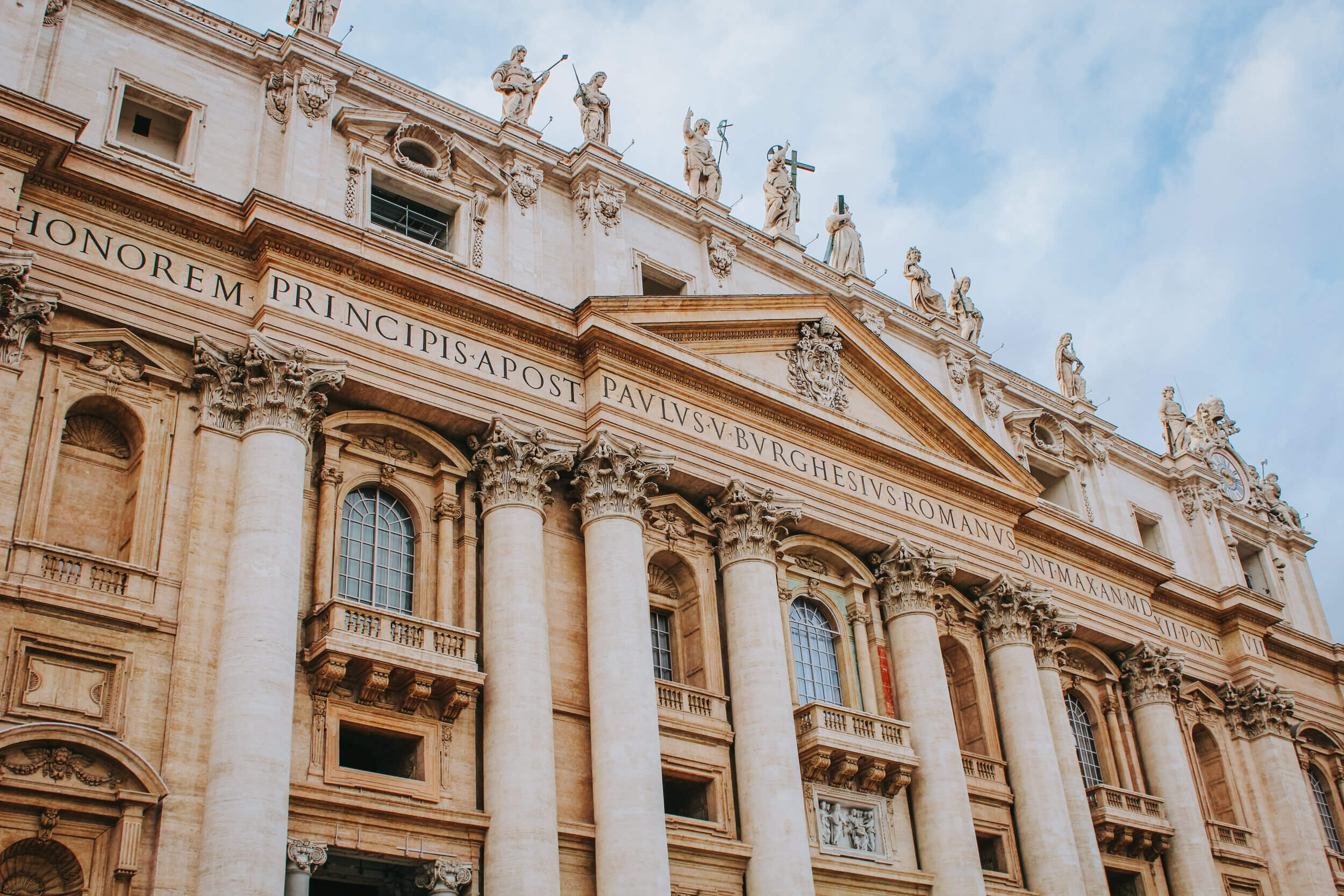
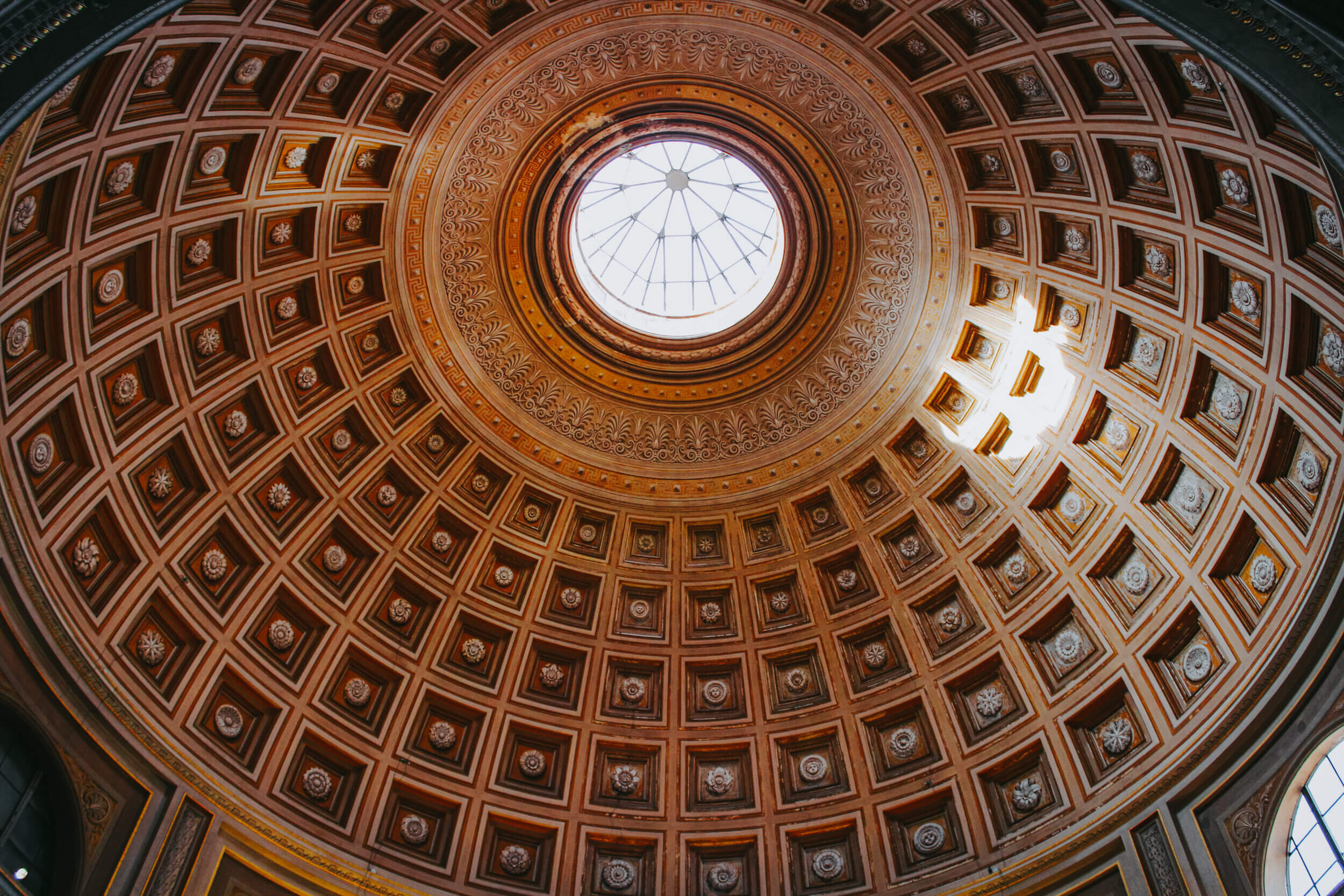
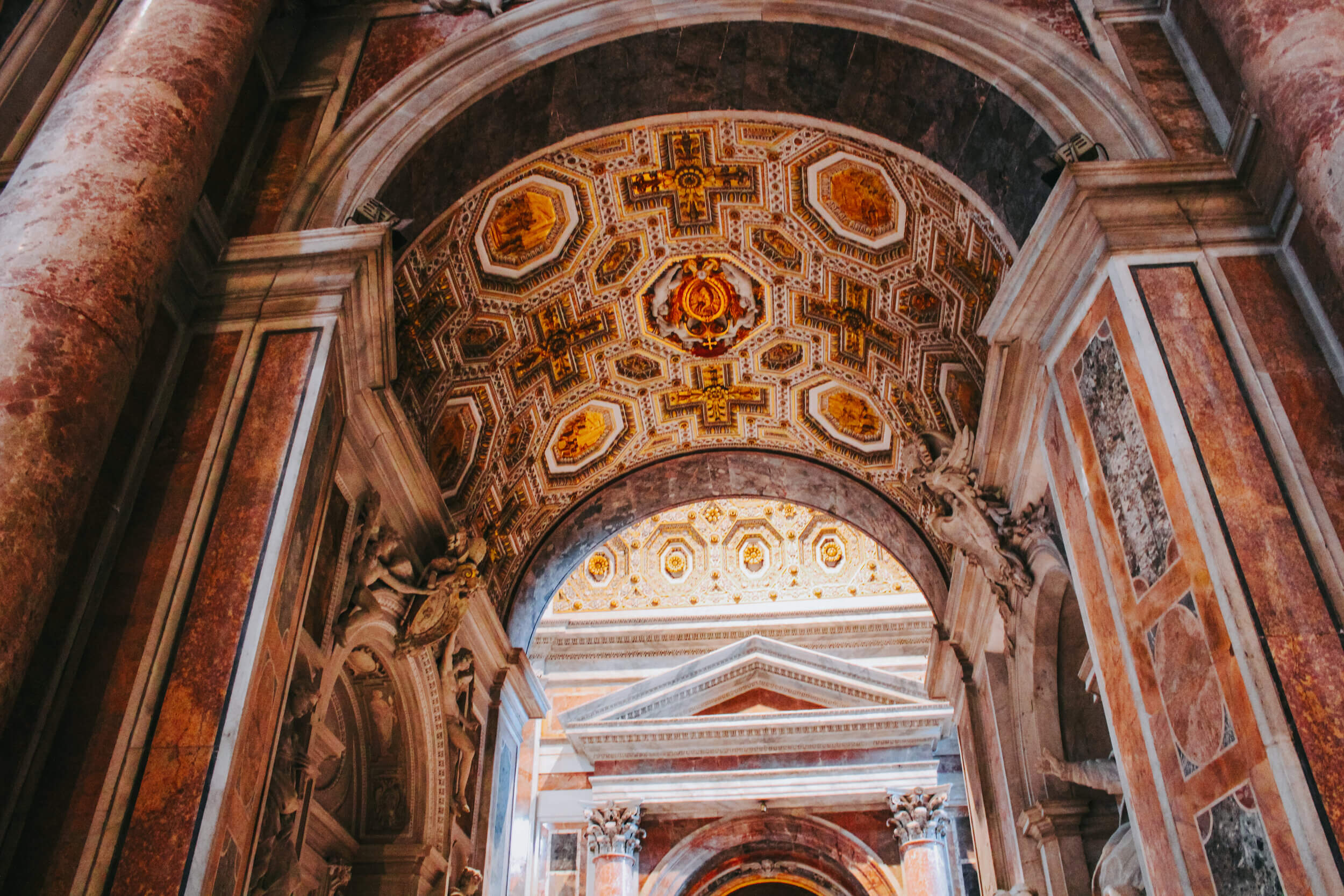
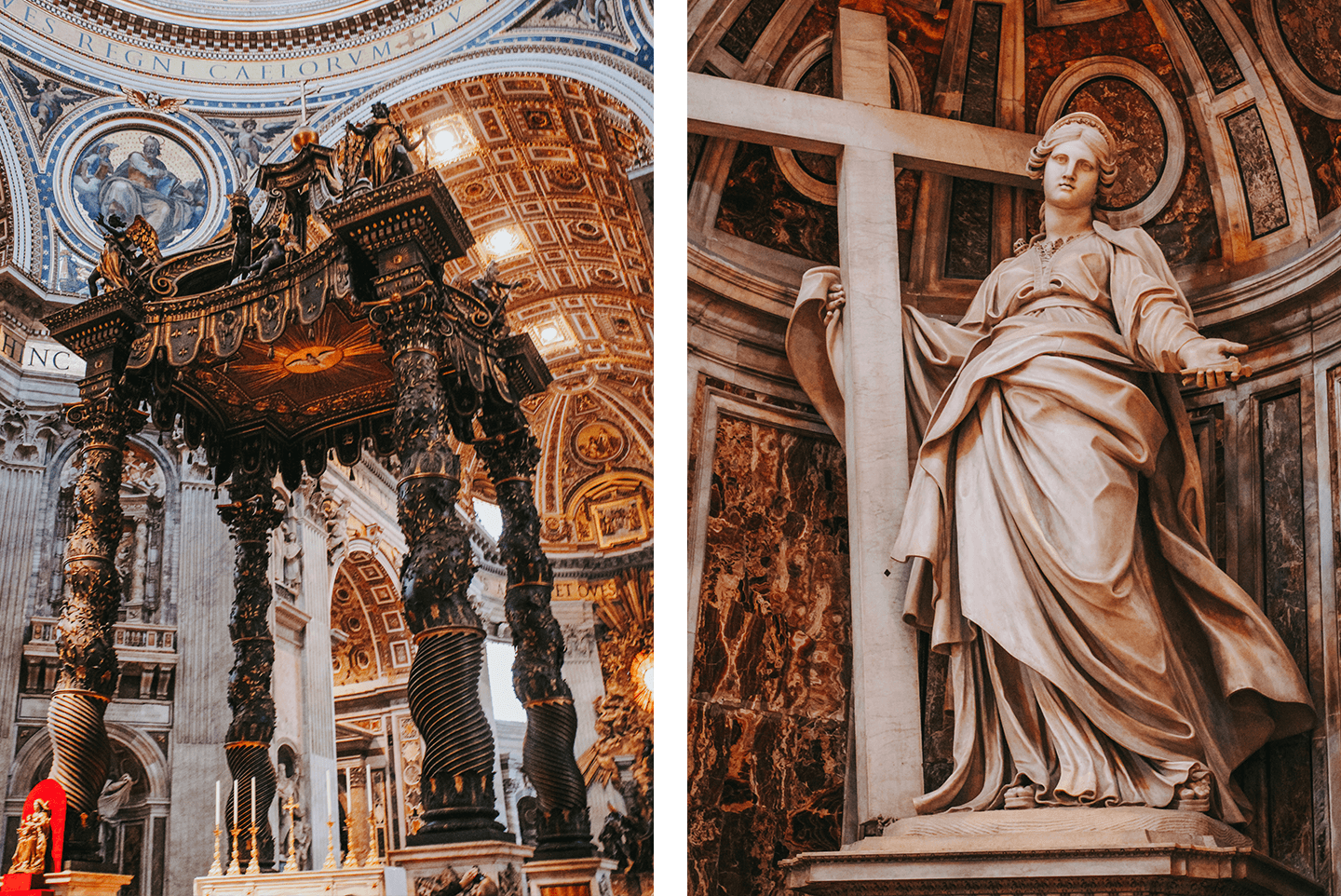
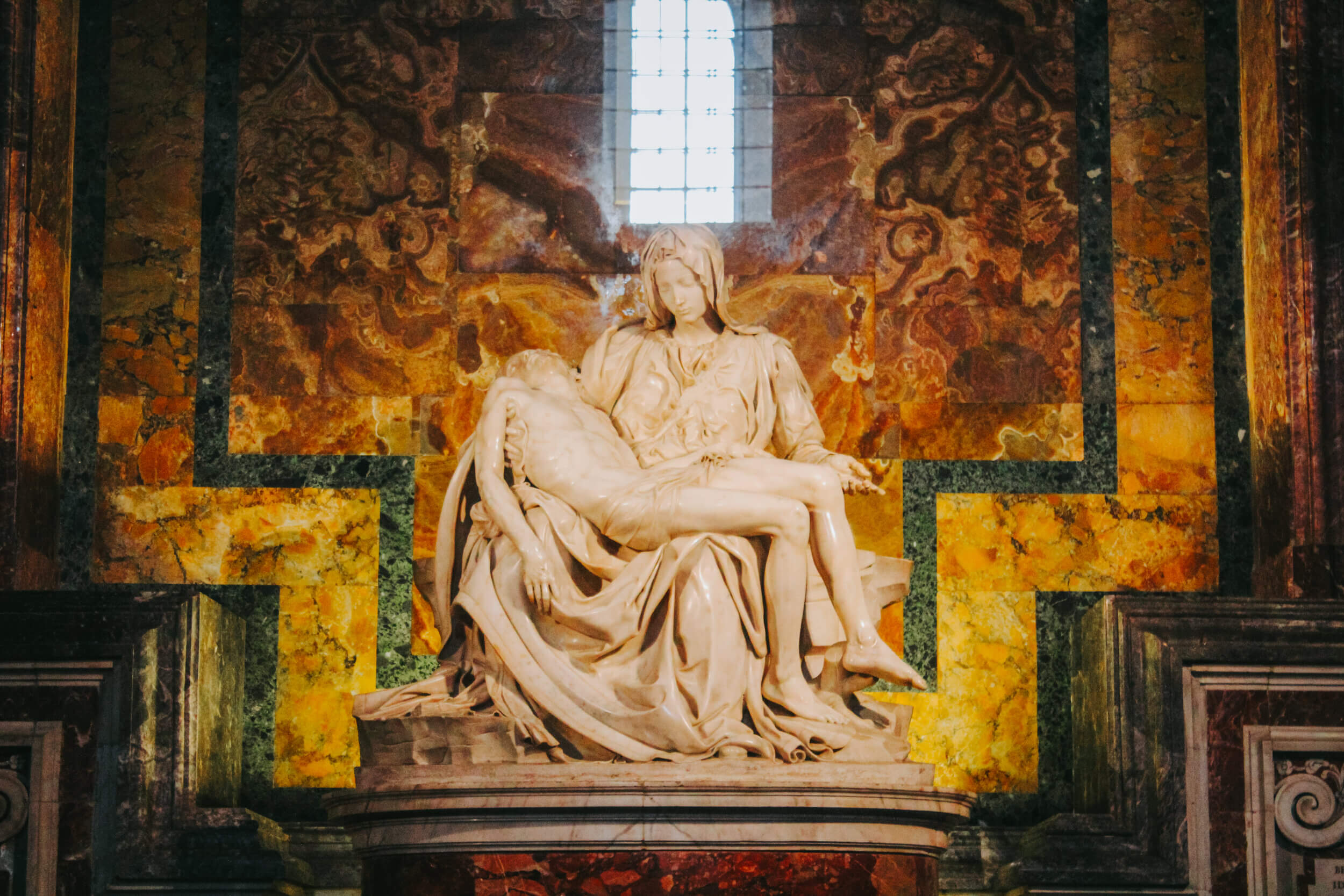
Located in St. Peter’s Basilica in Vatican City, The Pietà (1498-1499) is a renowned Renaissance sculpture by Michelangelo Buonarroti.

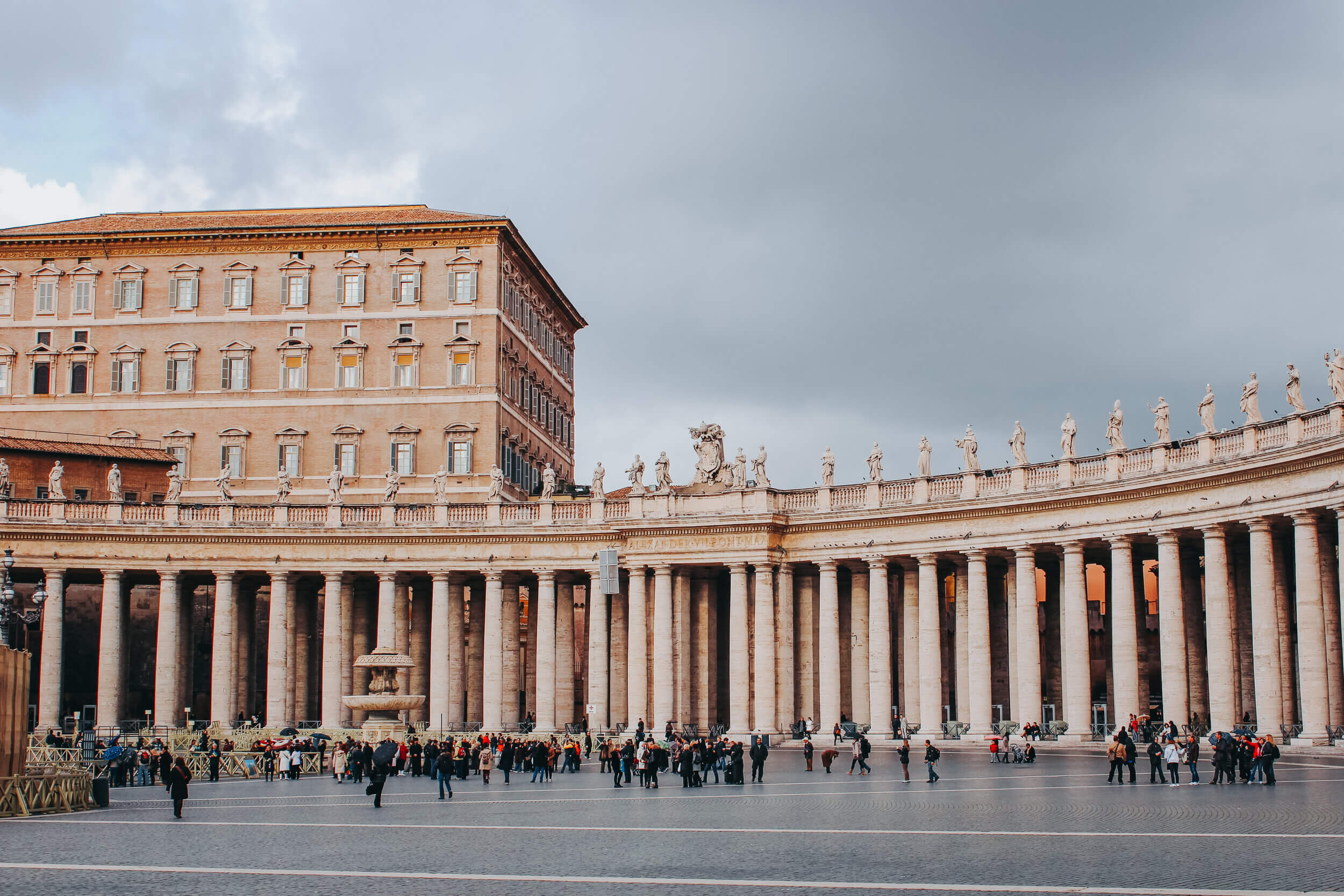
CASTEL SANT’ANGELO
Built in 123 AD for Emperor Hadrian, the Castel Sant’Angelo sits alongside the Tiber River and offers breathtaking views of Rome and Vatican City. The Castel was initially built as a monumental tomb for Hadrian and his family but was later converted into a castle and fortress for the Pope in the Middle Ages because of its position along the Tiber River and its architectural design. Although its location is in Rome, there is even a fortified corridor that connects the Castel to St. Peter’s Basilica in Vatican City called the Passetto di Borgo. The exterior stonework shows the transformation of the fascinating events that have occurred over the centuries. The Bridge of Castel Sant’Angelo, built in 239 AD, is considered one of the most famous bridges in Rome. The bridge is ornamented with ten stucco angels holding instruments of the Passion of Christ and was commissioned from Giani Lorenzo Bernini’s program, in which he sculpted two of the angels.
Address: Lungotevere Castello, 50, 00193 Roma RM, Italy
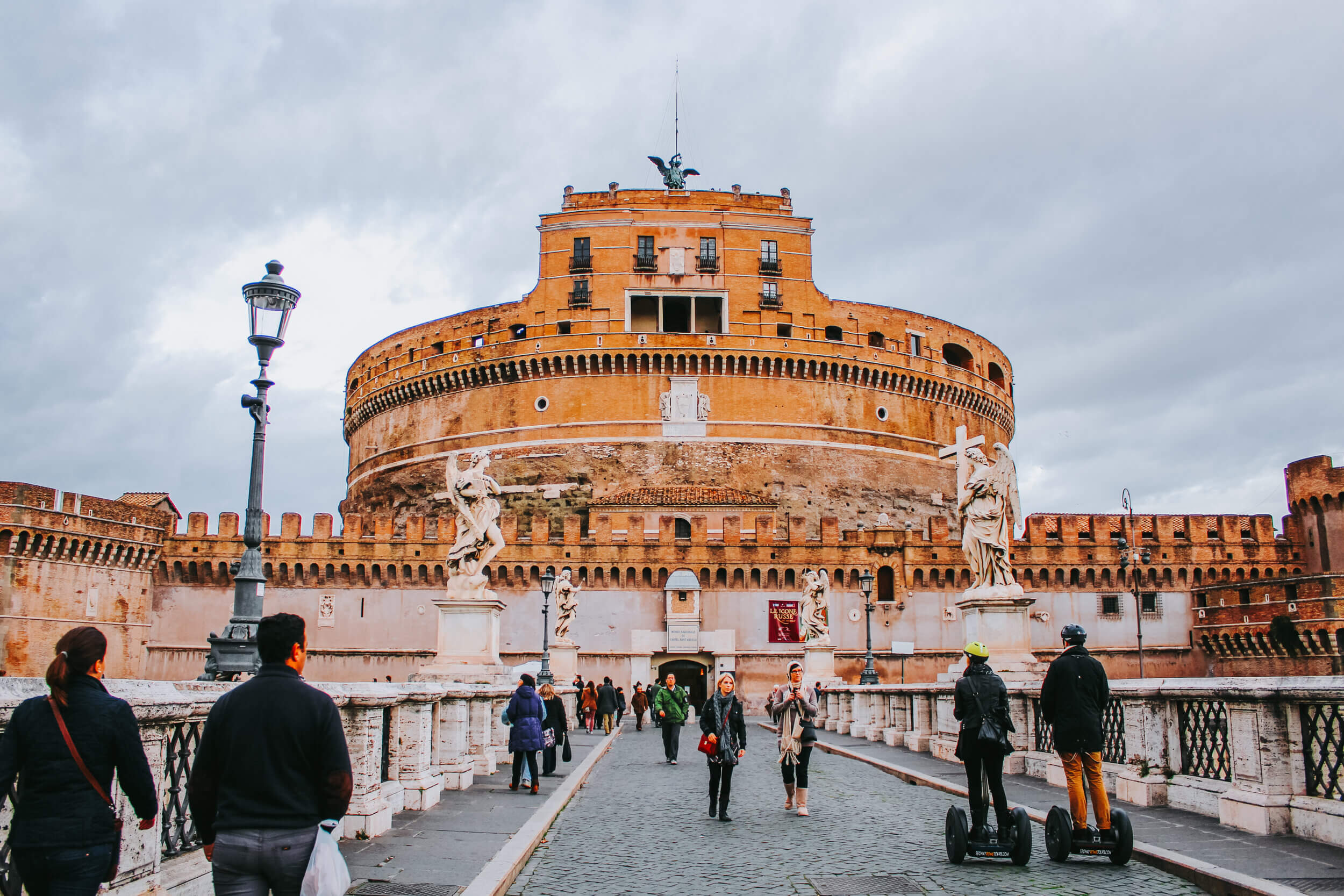
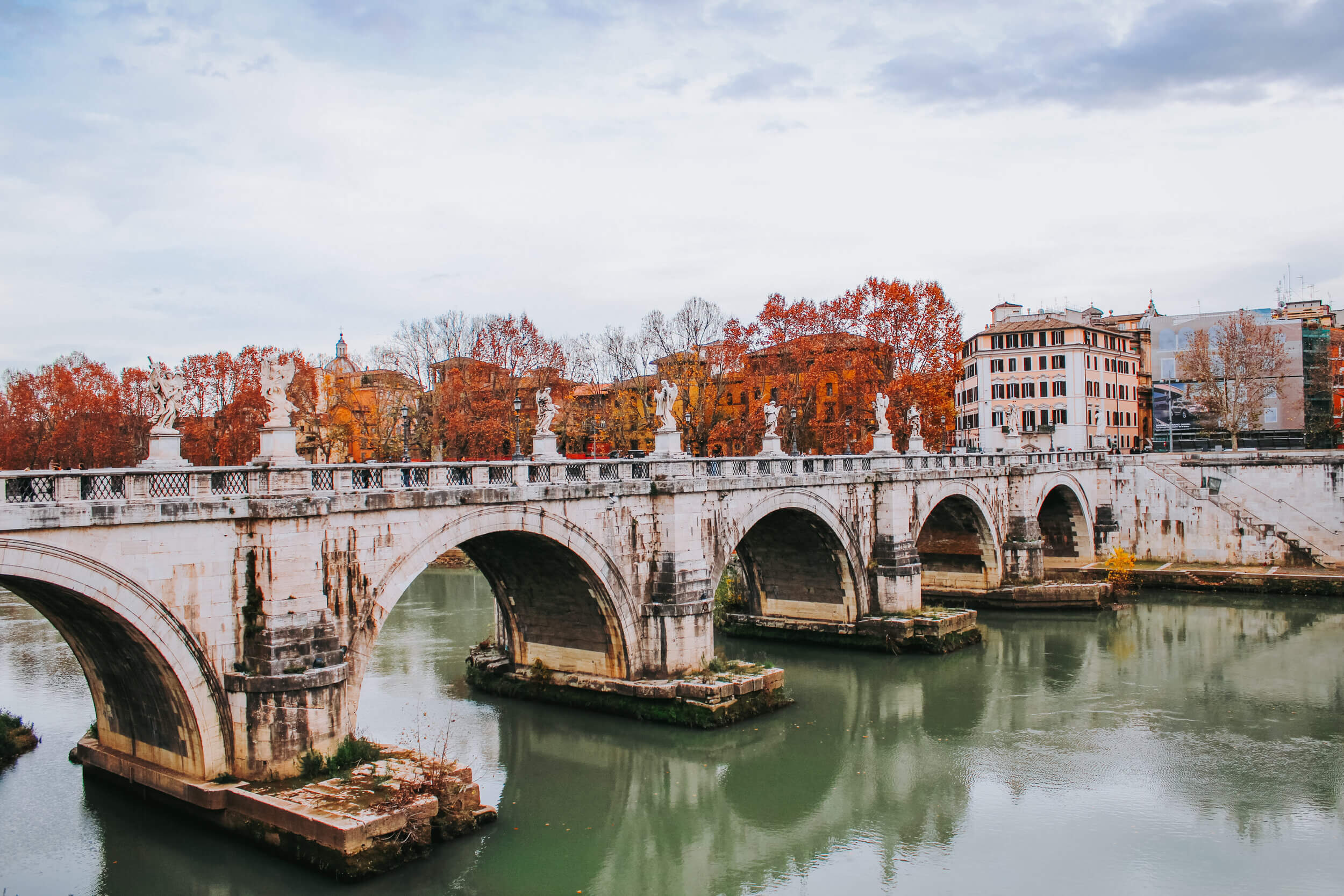
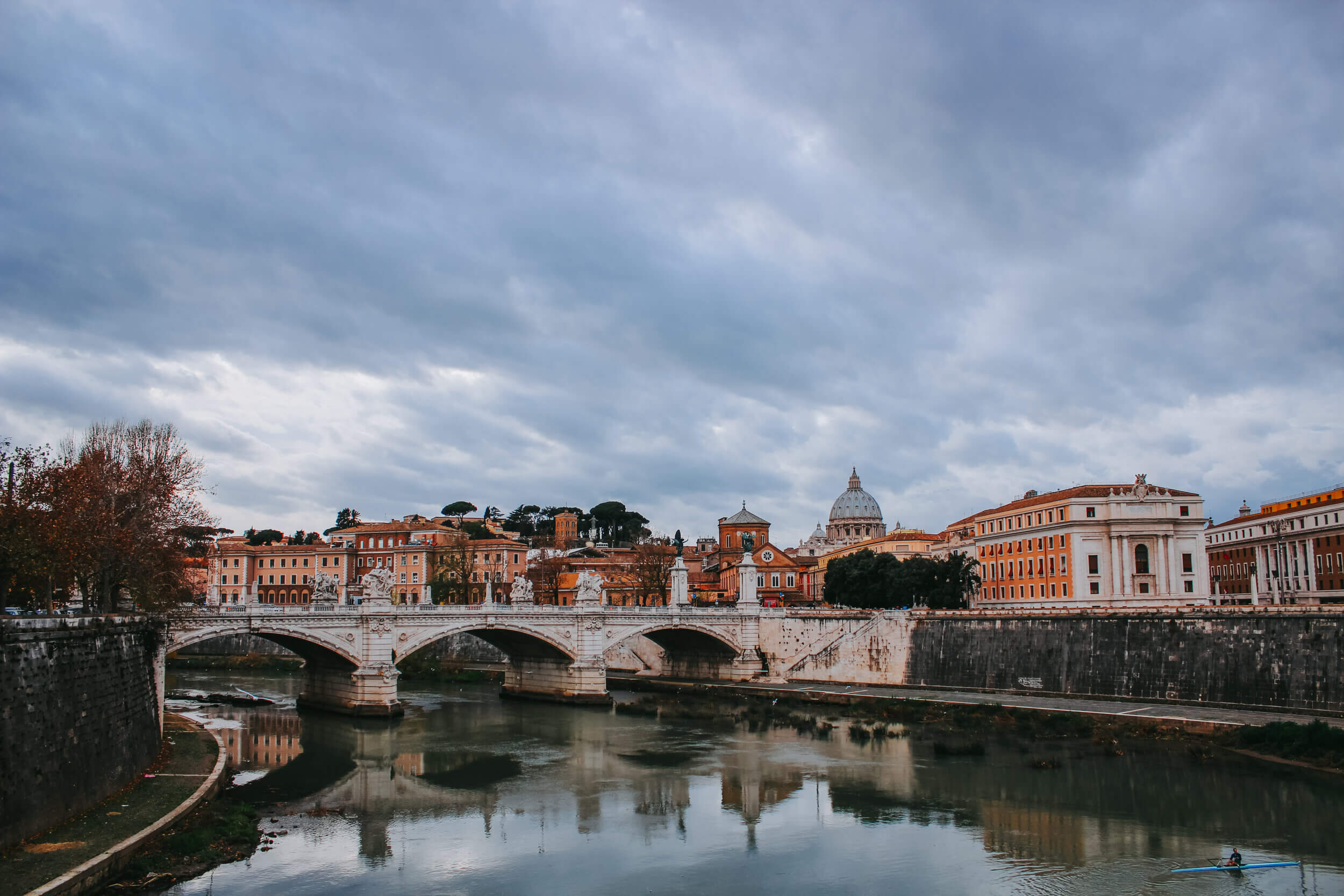

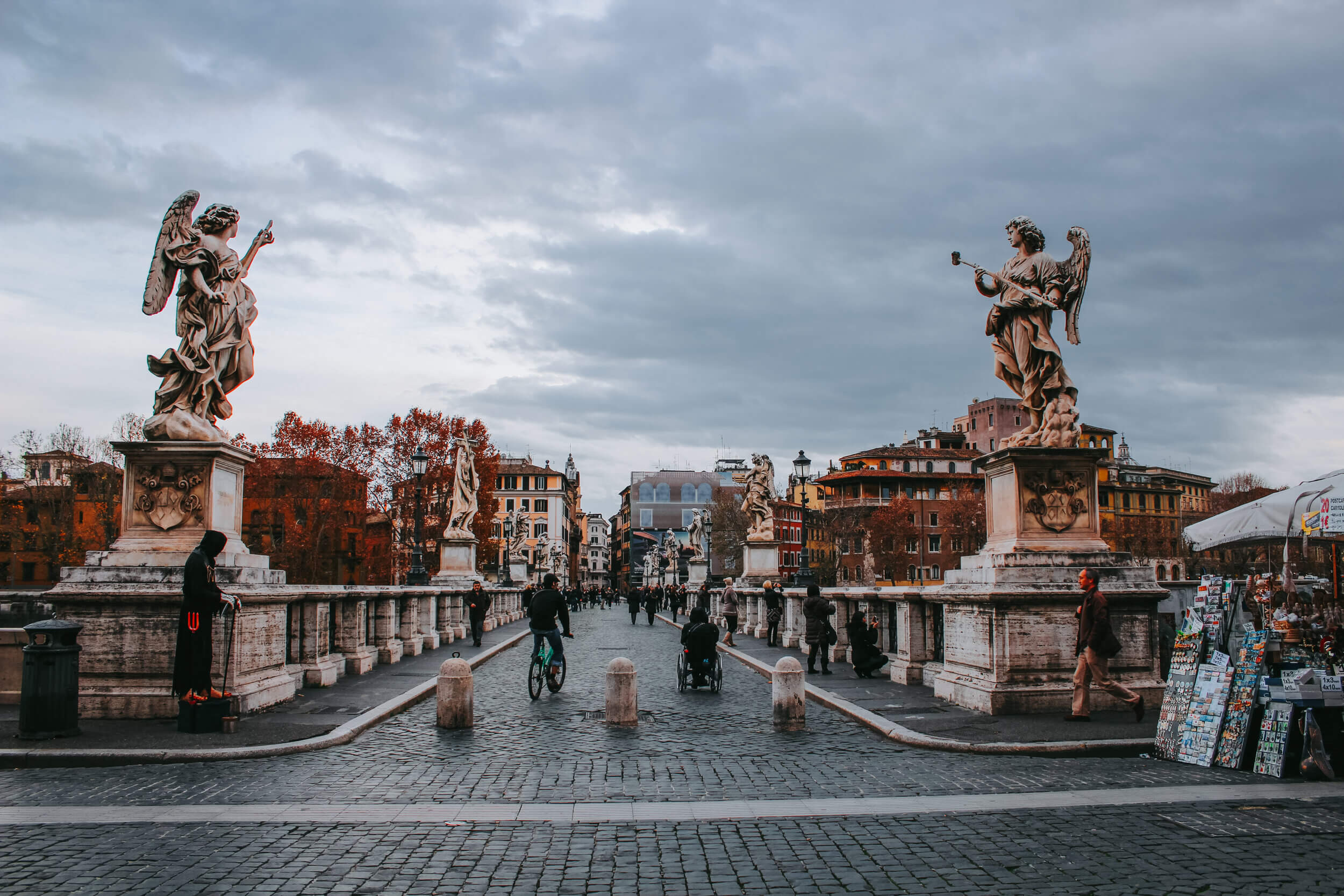
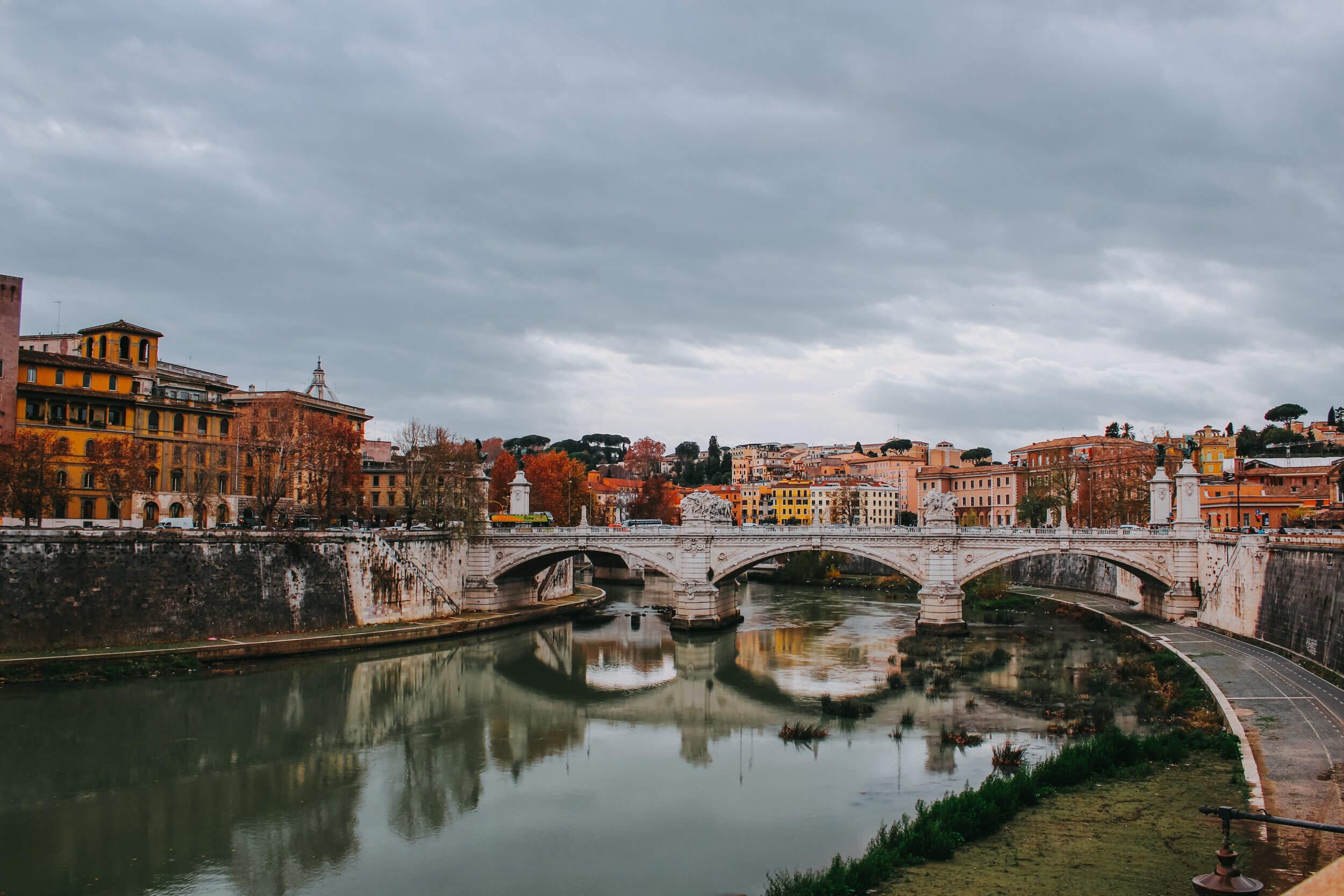
Have you ever traveled to Rome? If so, what are some of your favorite sights in the city?
Comment below!






Leave a Reply